With monuments and memorials galore and museums aplenty, there are enough WWII sites in Washington DC to fill an entire itinerary. For a World War II enthusiast, Washington D.C. is a must-take trip. Some of these you’ve probably heard of, but many may be new to you. Use this list to build yourself an unforgettable itinerary.
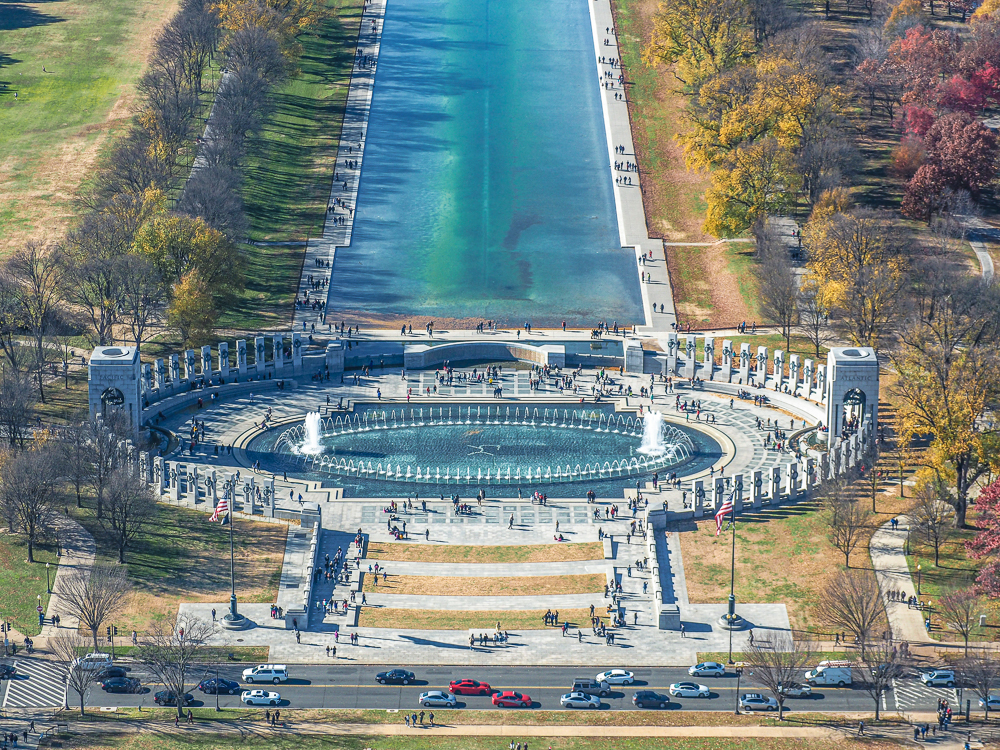
Map of WWII sites in Washington DC
This map contains all the WWII sites in Washington DC (and Alexandria, VA) I mention in this post. To save this map: Click on the star ⭑ next to the map’s title to save in your Google Maps. To use this map: When you get here, open Google Maps on your phone, click “Saved” at the bottom, then click “Maps.”
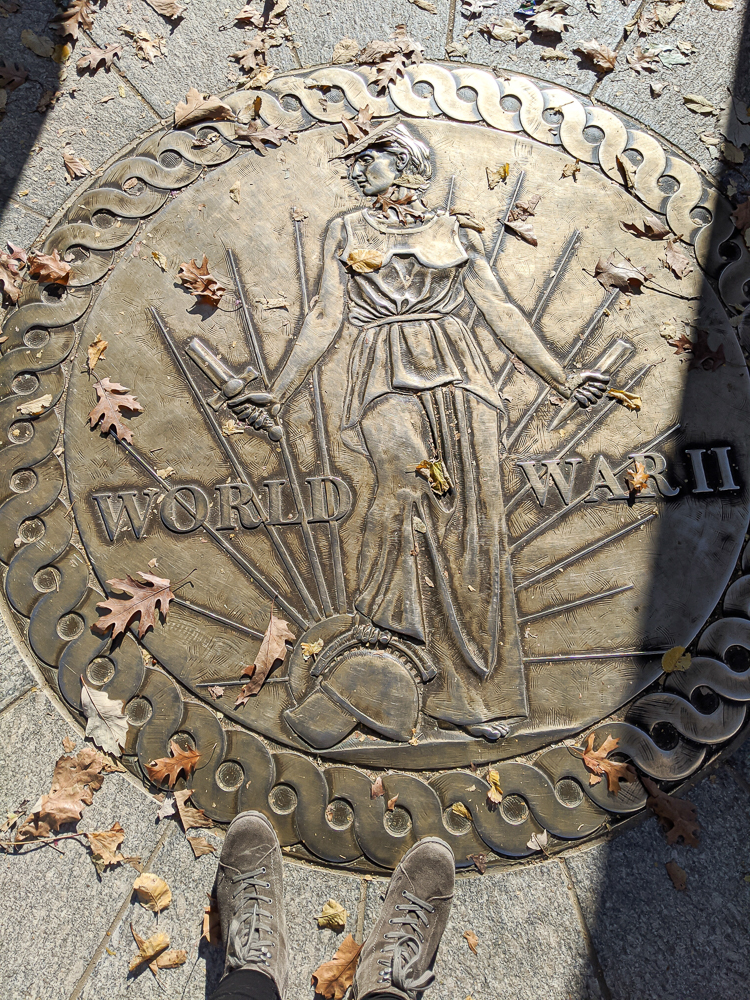
WWII Museums in Washington DC
Washington DC is a museum lover’s dream. Thankfully, that also includes tons of great WWII museums as well. Check these out on your next visit.
1. United States Holocaust Memorial Museum
The United States Holocaust Memorial Museum is one of the world’s top authorities on all things related to the Holocaust. Its mission is to document, study, and interpret Holocaust history and to serve as the United States’s memorial to the 6 million+ victims. It’s just a 5-minute walk from the center of the National Mall.
The museum’s permanent exhibitions spans three floors and covers topics like:
- Nazi Assault – 1933 to 1939: Rise of the Nazi party, outbreak of war, turning points in Holocaust history like Kristallnacht, the Nuremberg Laws, and the Invasion of Poland
- “Final Solution” – 1940 to 1945: Evolution of Nazi policy towards Jews, rise of ghettos and mass killings, concentration camps, primary-source artifacts
- Last Chapter: Liberation of the concentration camps, Allied victory over Germany in 1945, aftermath of the Holocaust
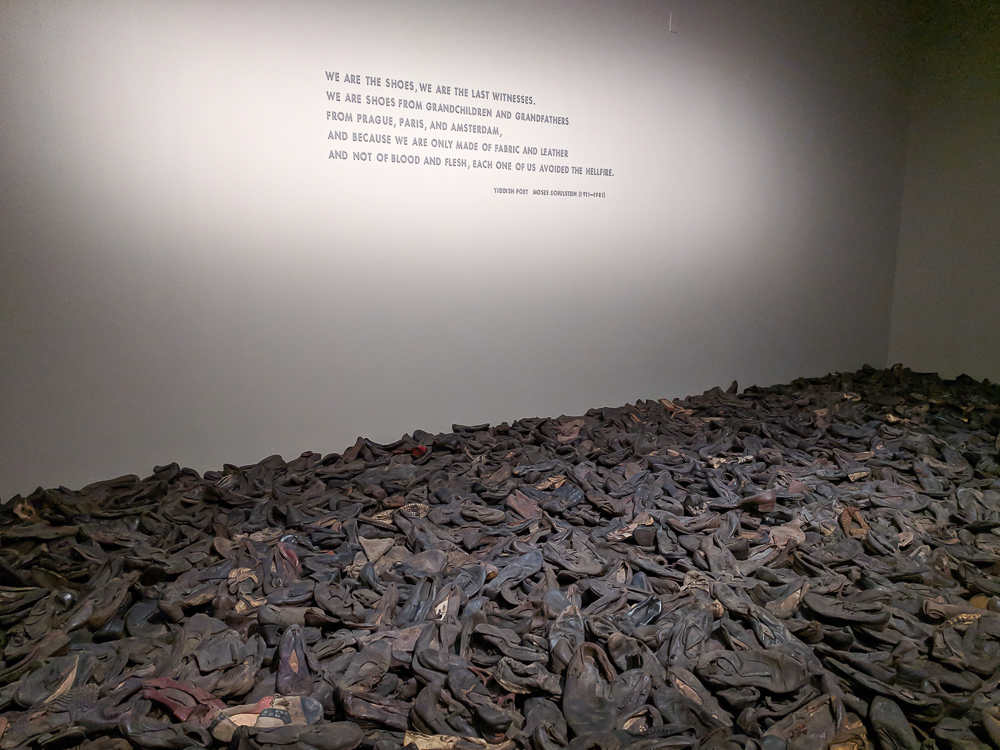
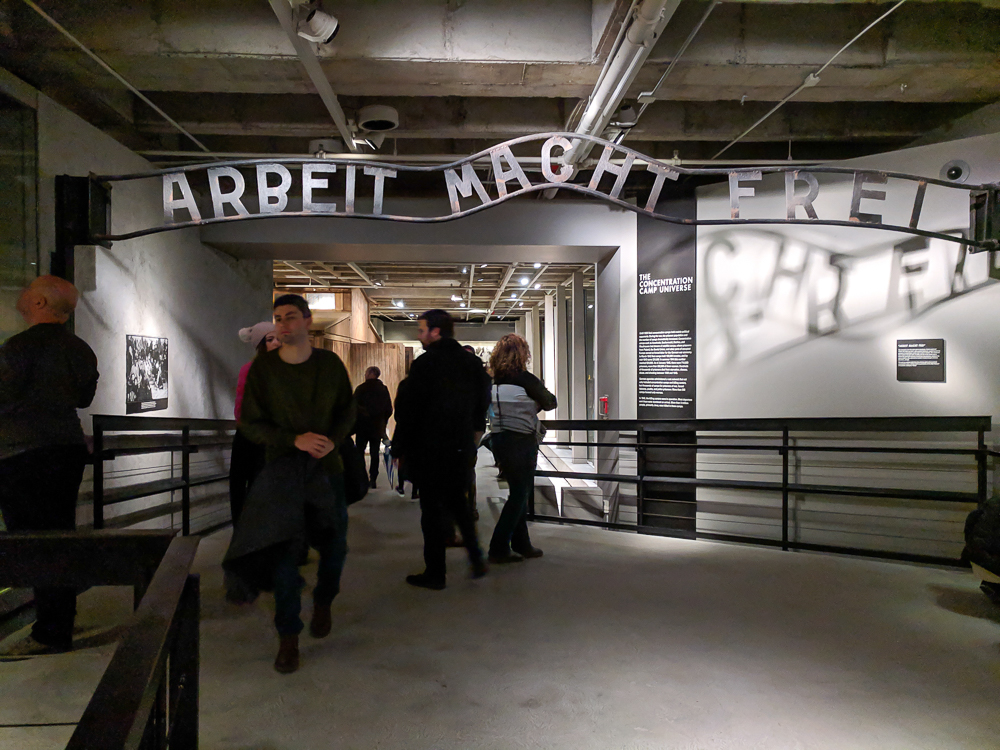

The USHMM is incredibly well-organized, expertly presented, and full of historical artifacts. A visit here is a must when visiting Washington DC.
Pro tip: Upon entering the museum, be sure to choose an “Identification Card.” Each one tells the story of a real person who lived during the Holocaust. On my visit, I chose a random card from deep in the stack and it just so happened to be her birthday.
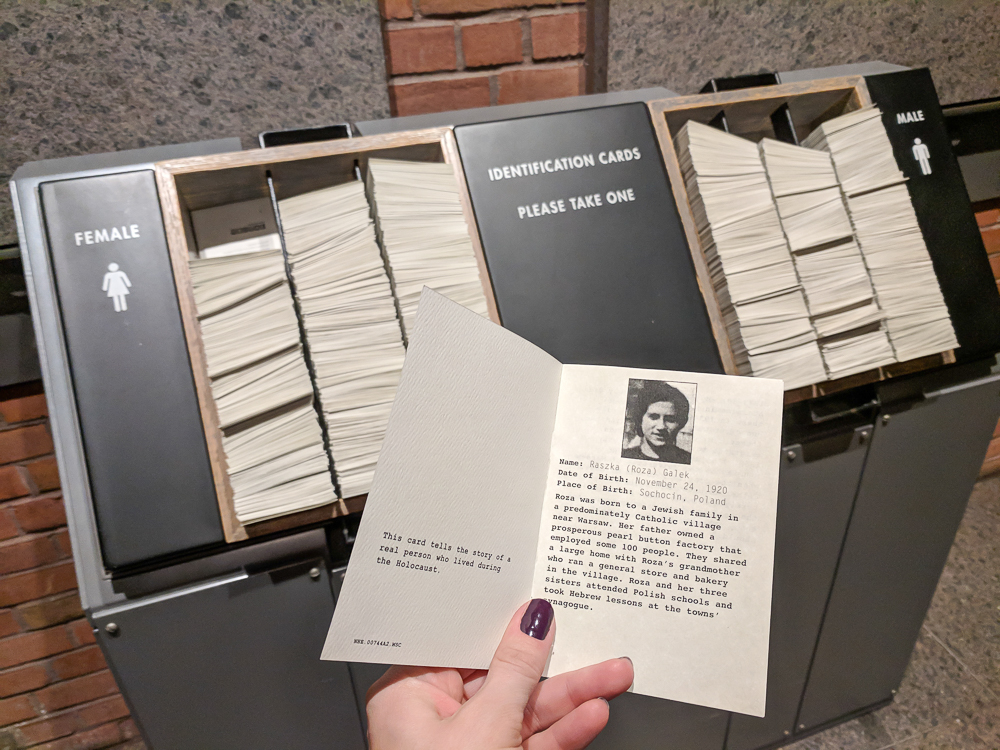
2. Smithsonian National Air & Space Museum, Udvar-Hazy Center
I’m going to preface this section by letting you know there are two Smithsonian Air and Space museums. There’s the one on the National Mall everyone knows and loves, and then there’s the Stephen F. Udvar-Hazy Center, the much more enormous one out by the Dulles airport.
While the Air and Space museum on the National Mall definitely deserves a visit, the Udvar-Hazy Center is a much more thrilling experience for World War II and aviation enthusiasts.
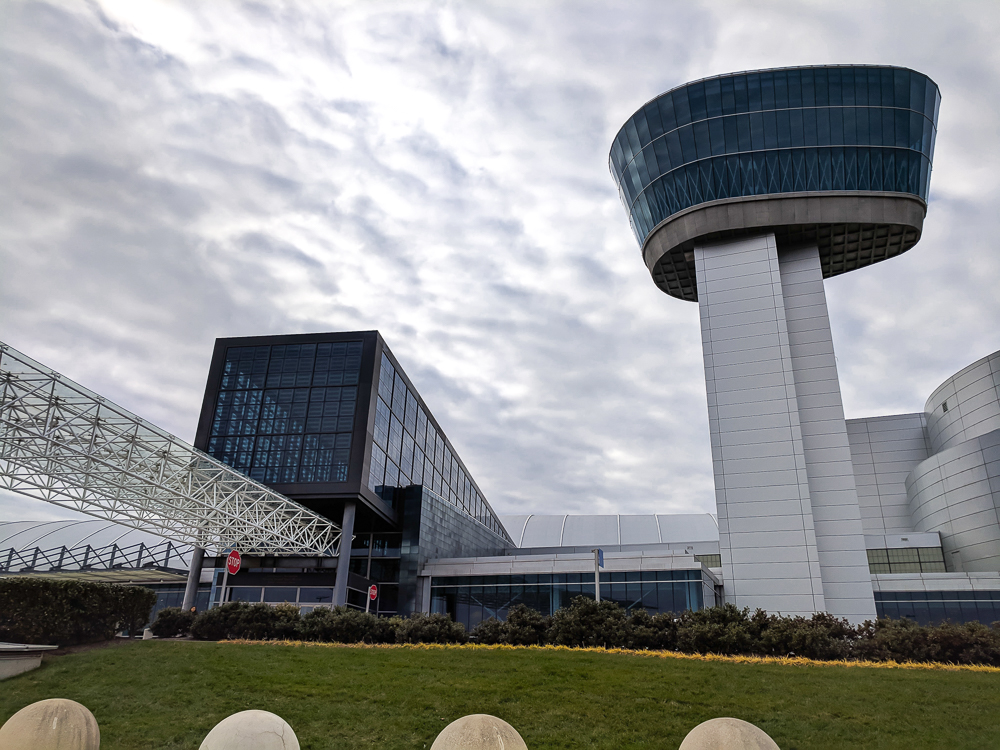
Besides the fact that there are entire wings on World War II aviation and WWII German aviation, you can also get up close to the Enola Gay—the B-29 Superfortress that dropped the atomic bomb on Hiroshima—and a Sikorsky JRS-1, the only plane at the museum to have survived the attack on Pearl Harbor.
The Udvar-Hazy Center also displays the Concorde, the Space Shuttle Discovery, the Lockheed SR-71 Blackbird (the fastest jet in history), and about a thousand other interesting machines.
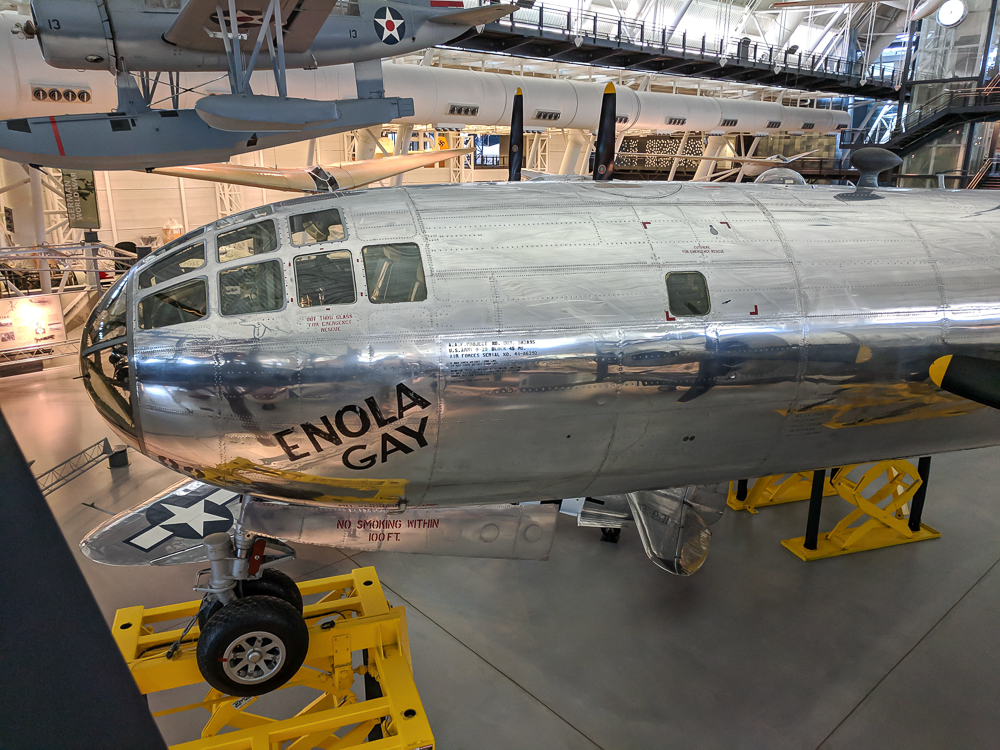
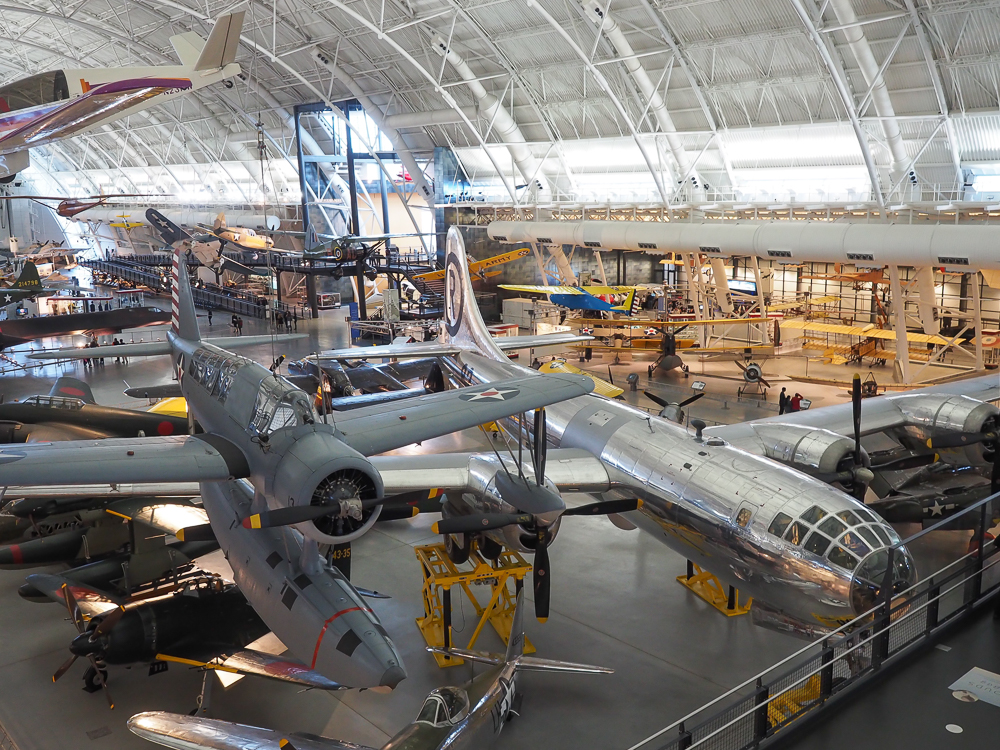

3. Smithsonian National Museum of American History
Speaking of the Smithsonian, you simply can’t miss the Smithsonian National Museum of American History, right here on the National Mall.
This all-encompassing museum features an entire wing on all topics related to World War II in the gallery titled The Price of Freedom: Americans at War. The exhibit covers war in American history from the times of the American Revolution to the present, including a great deal on World War II.
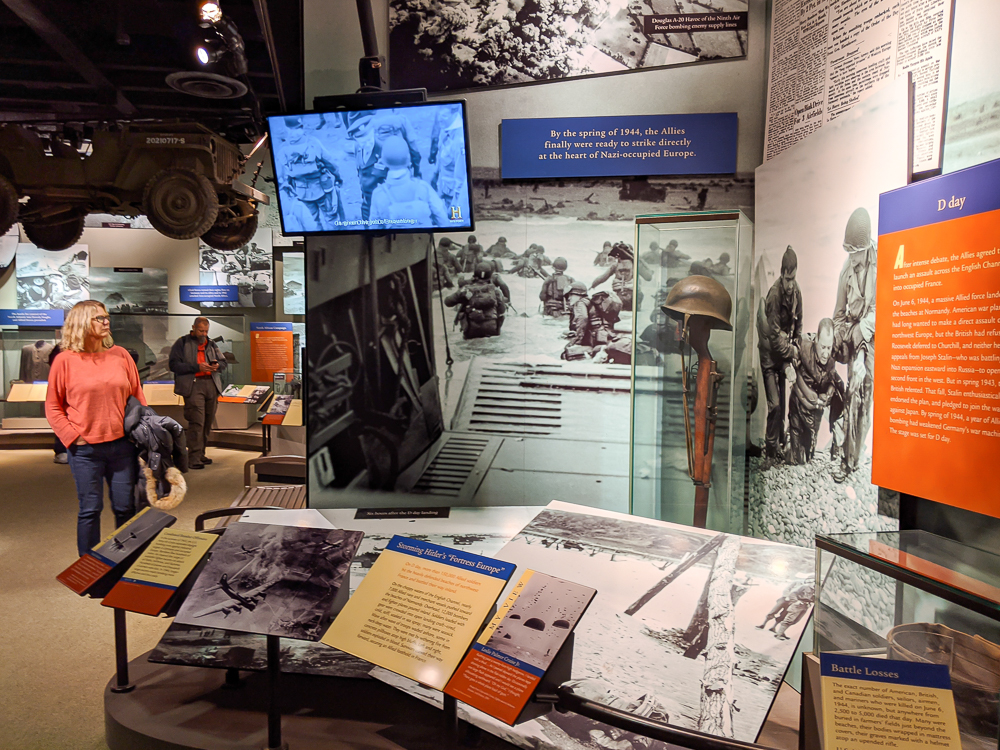
WWII at the American History Museum
The exhibit is a basic learning experience on many aspects of WWII including both the Atlantic and Pacific theaters, Hitler and other leaders, crucial battles and pivotal moments in WWII history, the home front, politics, and so much more.
You’ll see physical artifacts like a Willys Jeep used during the war. When I last visited in 2019, there was a special 75th anniversary exhibition on D-Day that featured a grave marker from Normandy American Cemetery and one of only two grappling hooks used at Pointe du Hoc still in existence.
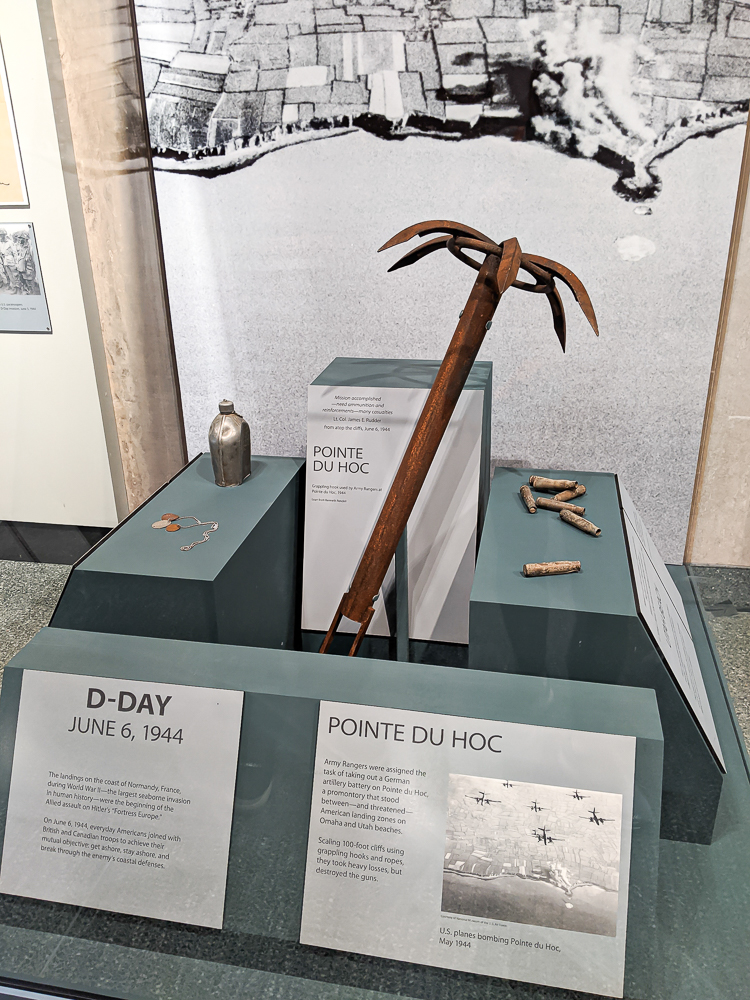
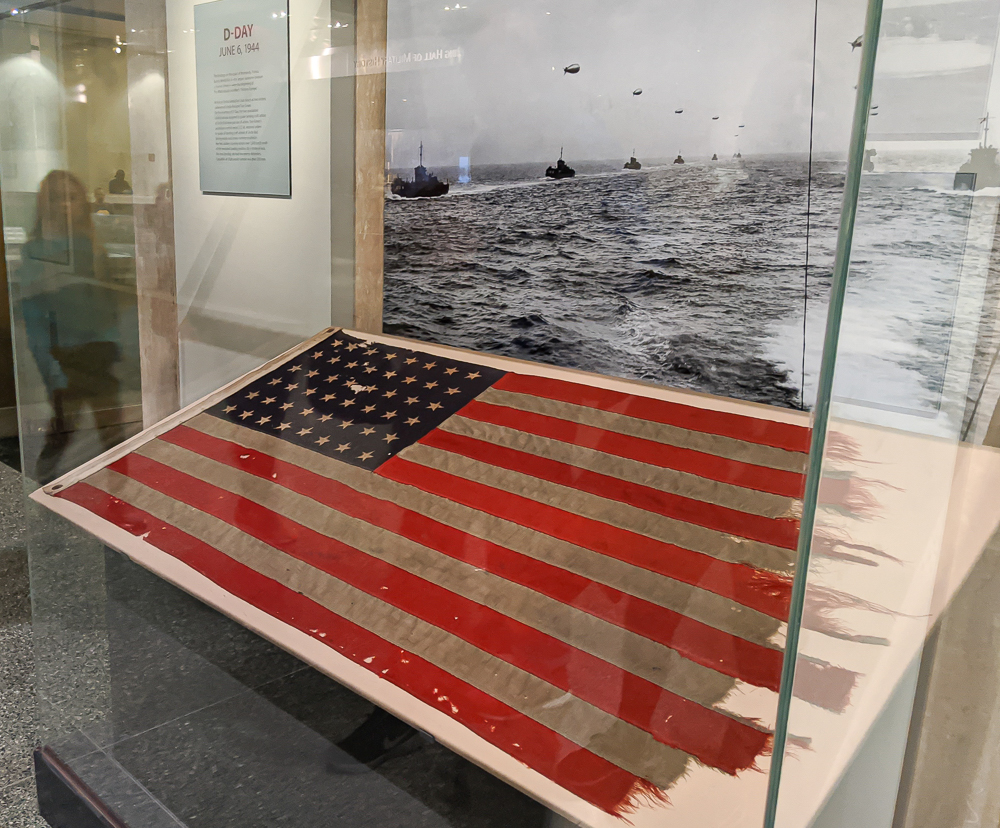
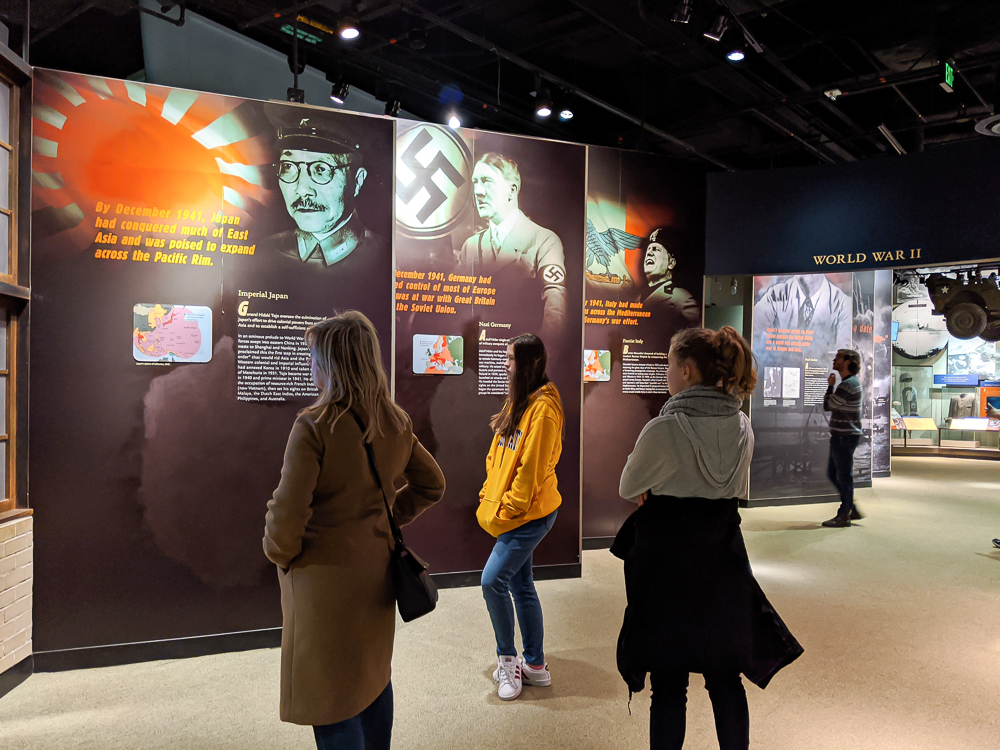
4. National Museum of African American History and Culture
The Smithsonian National Museum of African American History and Culture opened to the public in late 2016 and is the youngest of all 19 Smithsonian museums. It devotes itself exclusively to the documentation of African American life, history, and culture.
In the gallery called Double Victory, you can learn about African American military roles ranging from the Revolution to today, including World War II. Furthermore, it explores the overall African American military experience. The name references the “Double V” campaign which refers to the fact that, during WW2, Black Americans were fighting for victory both abroad (in the war) and at home (for equal rights).
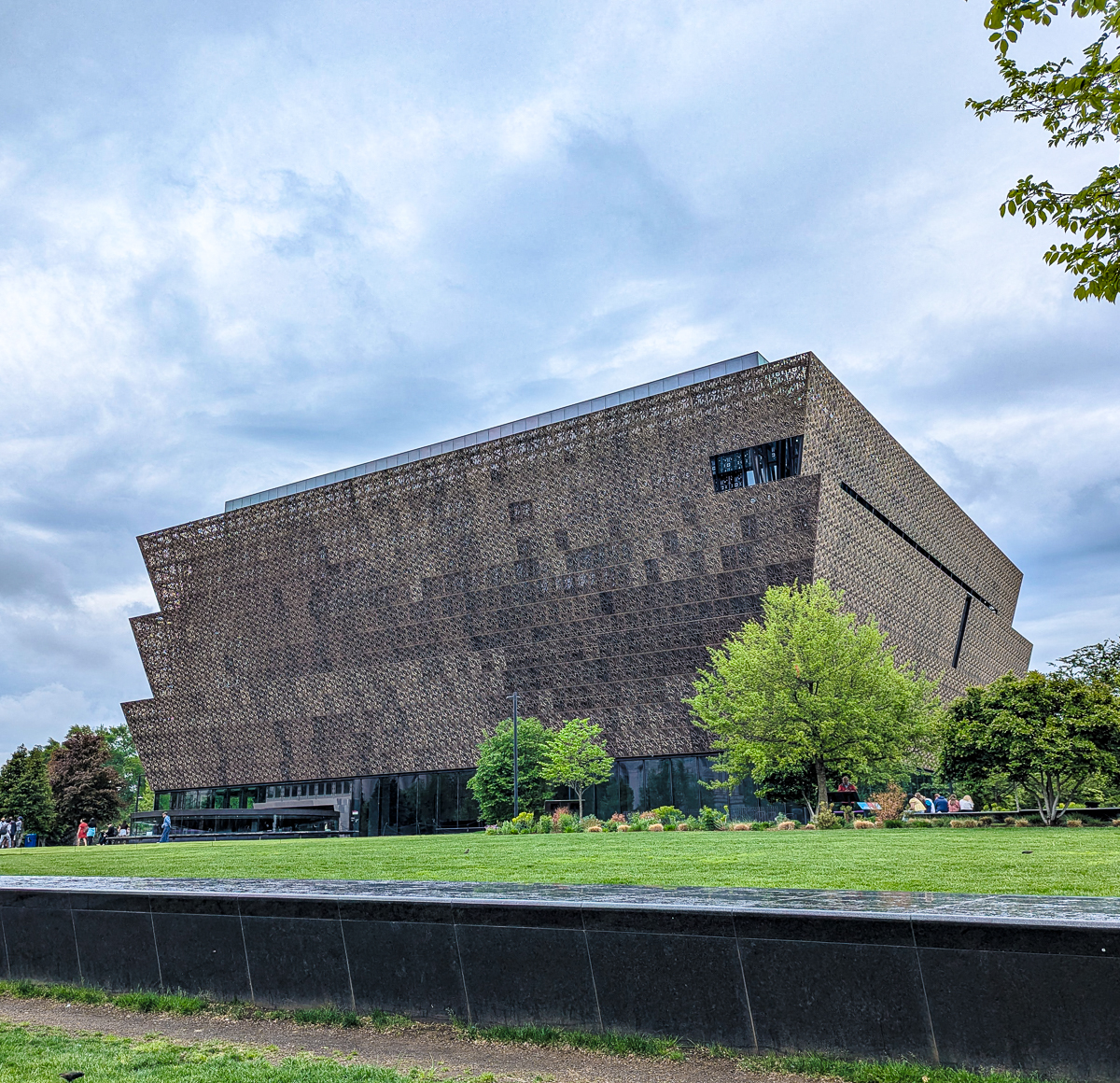

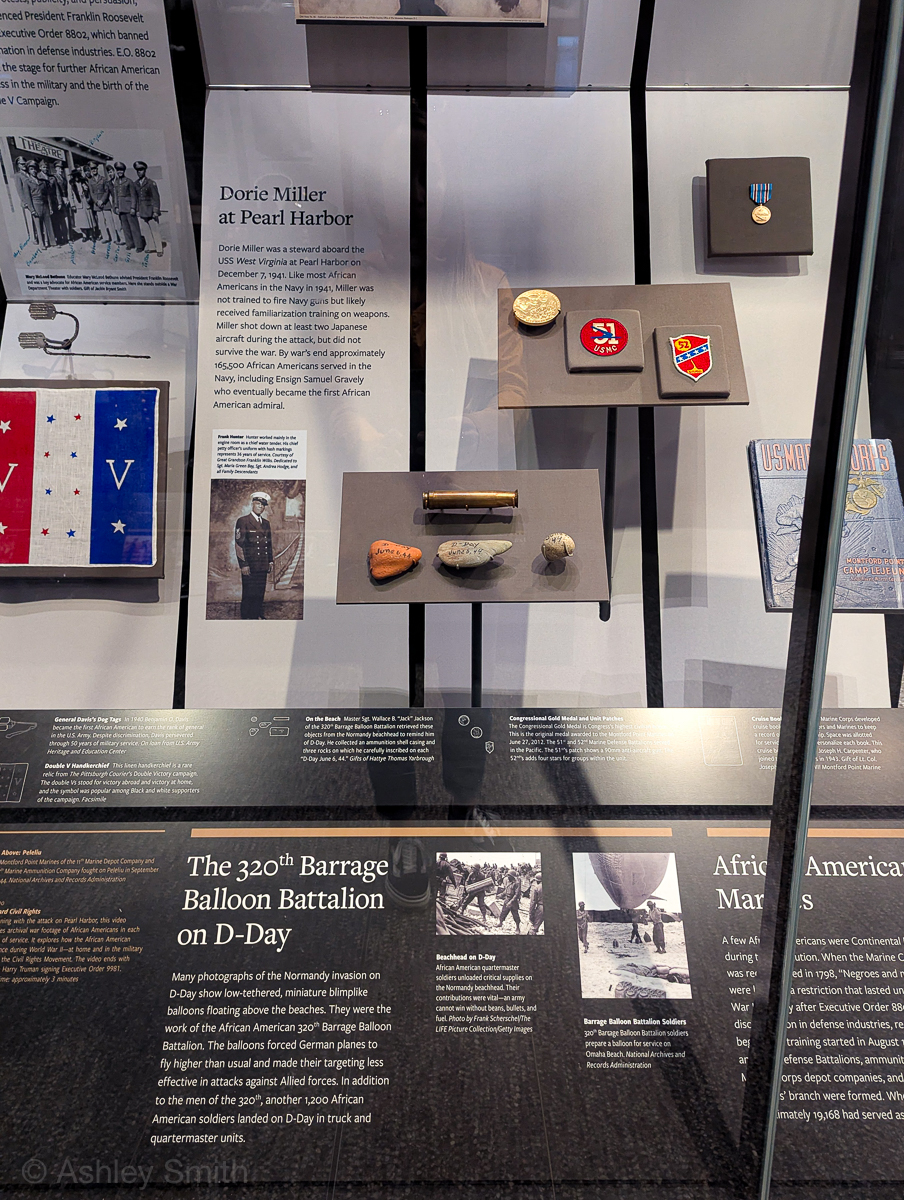
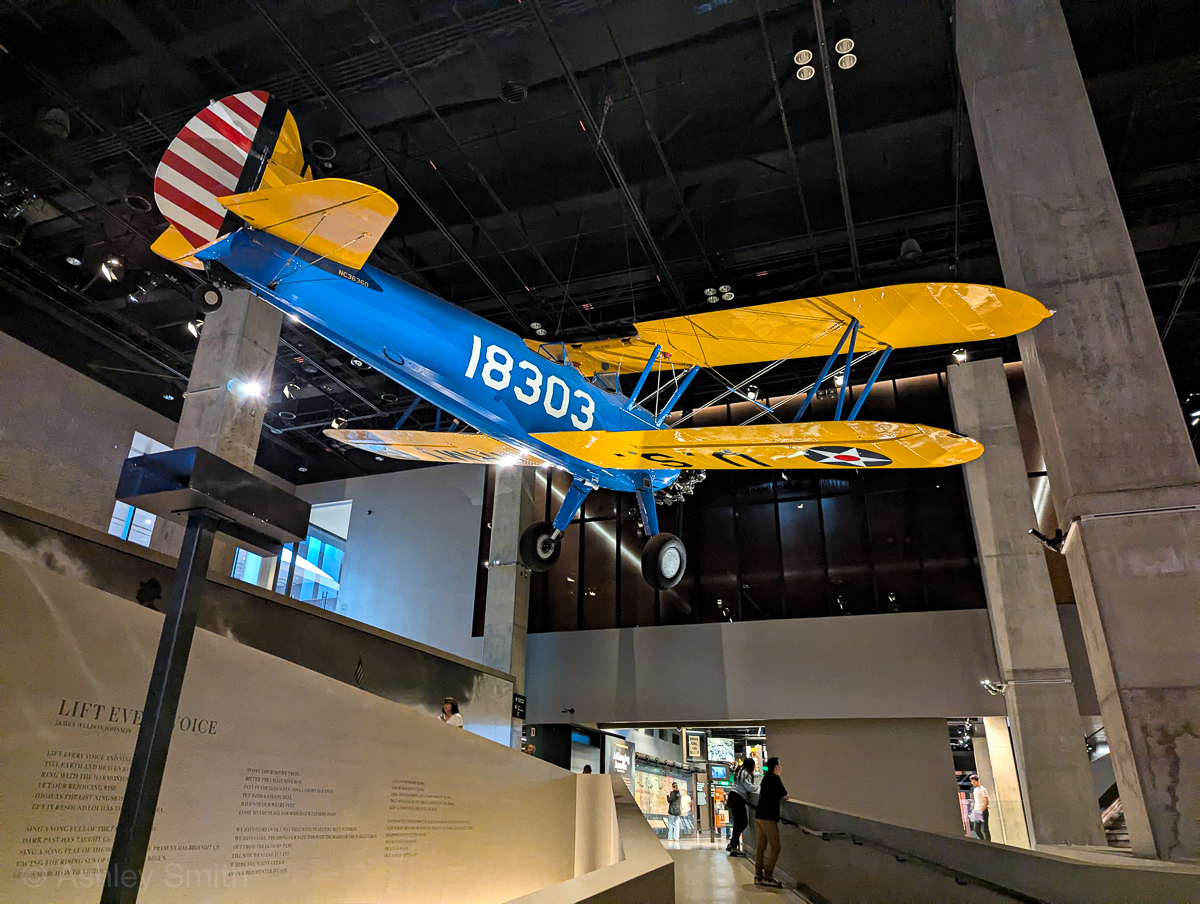
5. National Guard Memorial Museum
A few blocks from Washington DC’s Union Station is the National Guard Memorial Museum. Its mission is to explain the National Guard’s role in all wars and conflicts from the American Revolution to the present.
You’ll see everything from Revolutionary muskets and Civil War swords to physical pieces of the World Trade Center in the 9/11 gallery and everything in between. Pro tip: Don’t miss the pistol Felix Sparks shot into the air during the liberation of Dachau Concentration Camp.
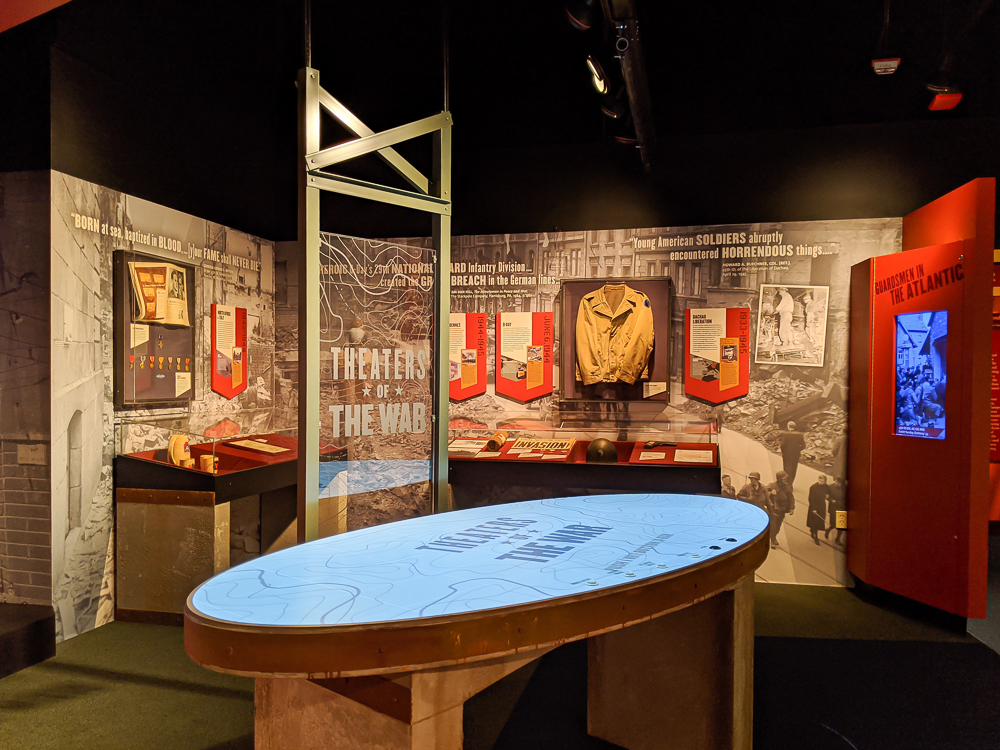
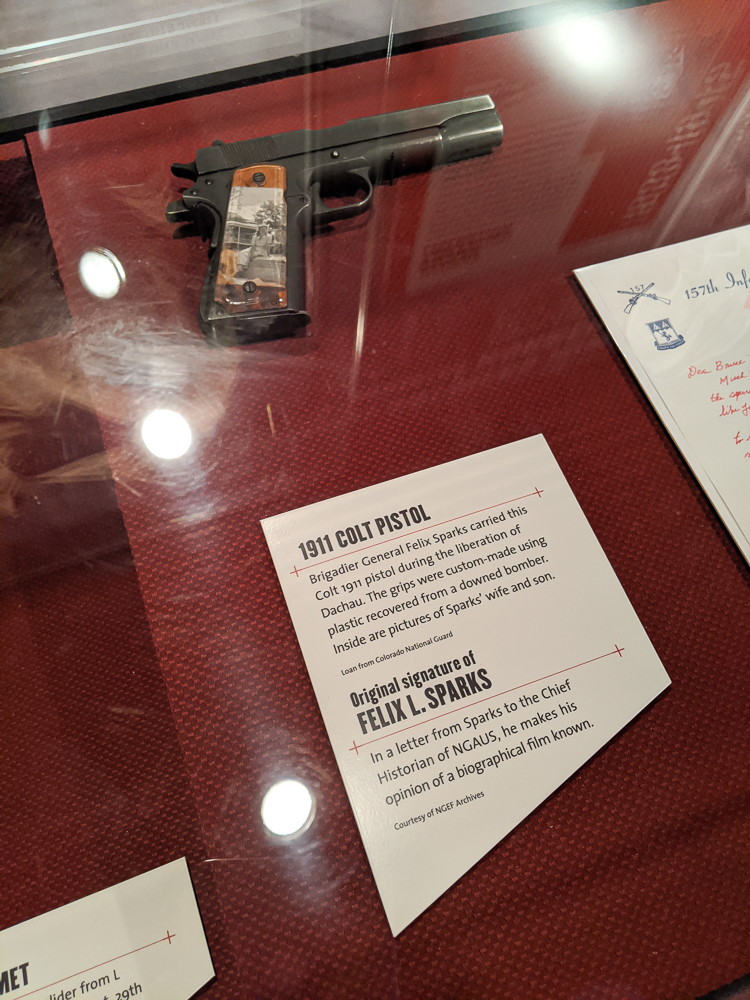
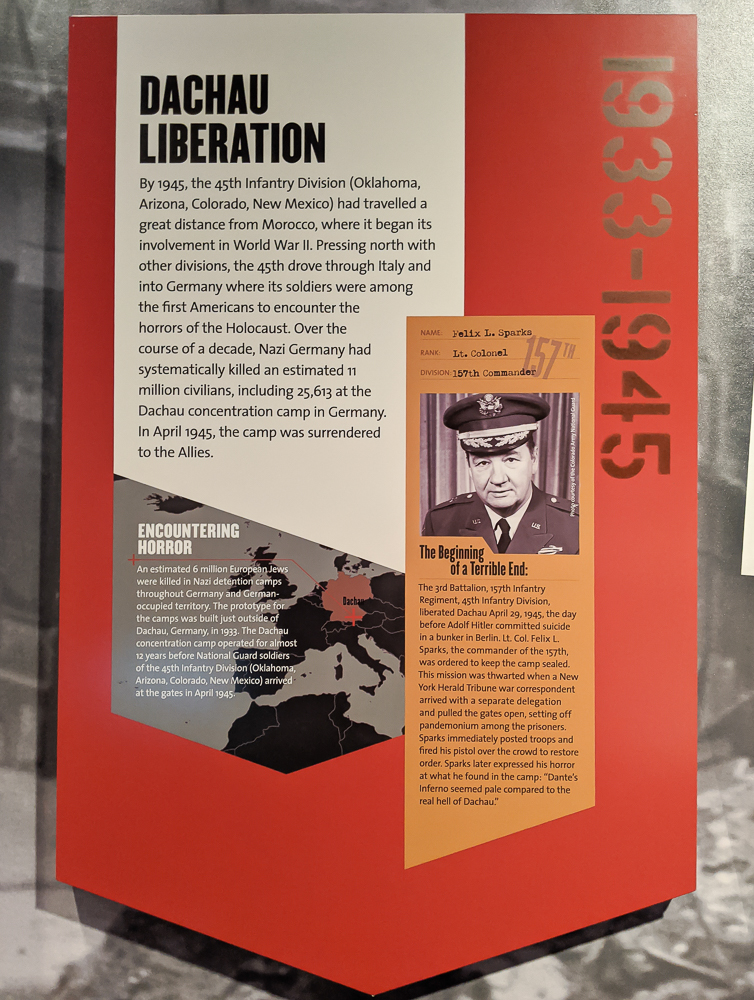
6. National Museum of the U.S. Navy
Located in Washington DC’s Navy Yard (obviously) is the National Museum of the U.S. Navy which opened in 1963. It’s one of 14 Navy museums around the country but is the only one that presents an all-encompassing overview of Naval history.
The National Museum of the U.S. Navy is one of the top WWII sites in Washington DC because they regularly have exhibits focusing on World War II history, though they do change often. (Check their list of current exhibits before you go just in case.)
Important note! While you can visit this museum as a civilian, you need to either visit someone with the appropriate credentials, or be pre-vetted and approved. Consult this page before you just show up at the gate like you belong there. Like I did.
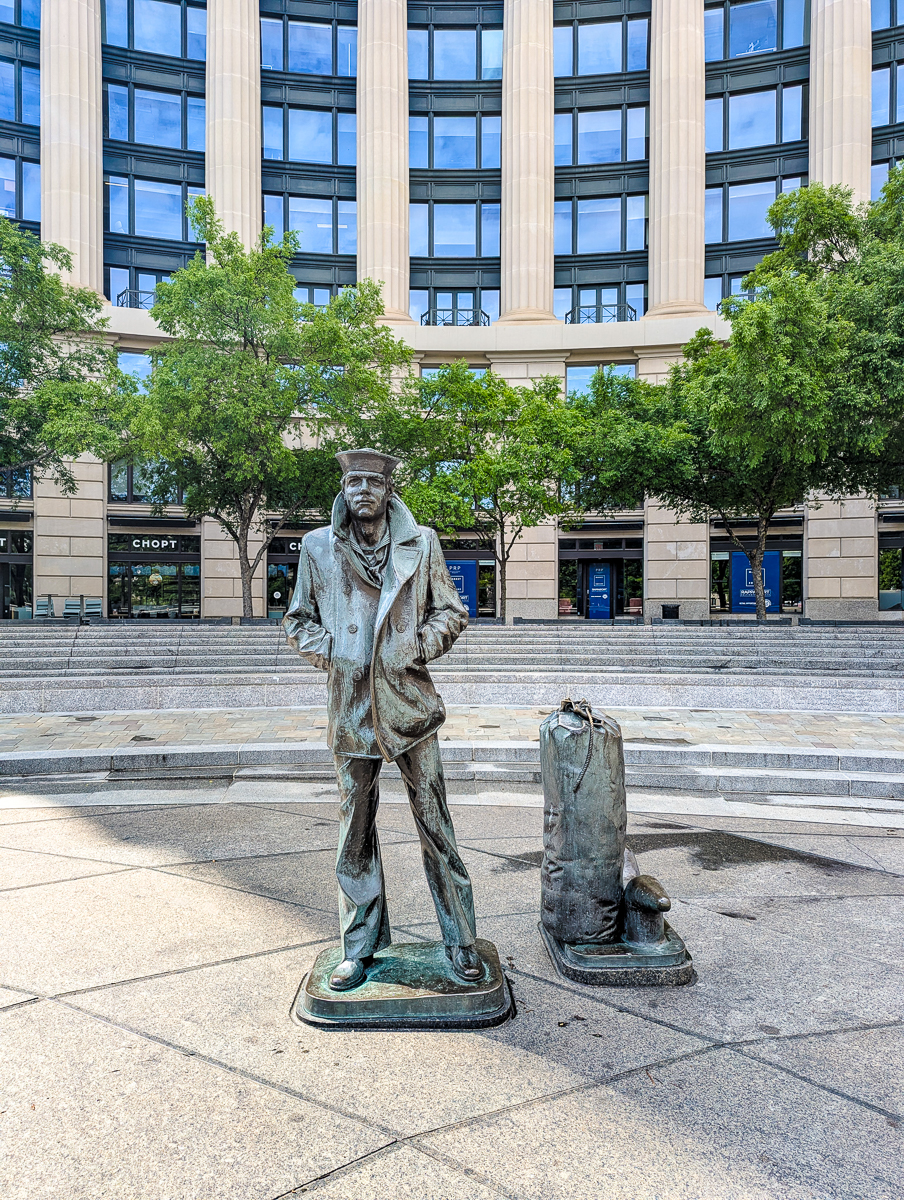
7. National Museum of American Jewish Military History
Included in the long list of military museums in Washington DC is the National Museum of American Jewish Military History. It was chartered by an act of Congress in 1958 and documents and preserves Jewish Americans’ contributions to our freedom.
Here, you can learn about the roles Jewish Americans in the military have played throughout history, including in World War II. I found this museum so fascinating!
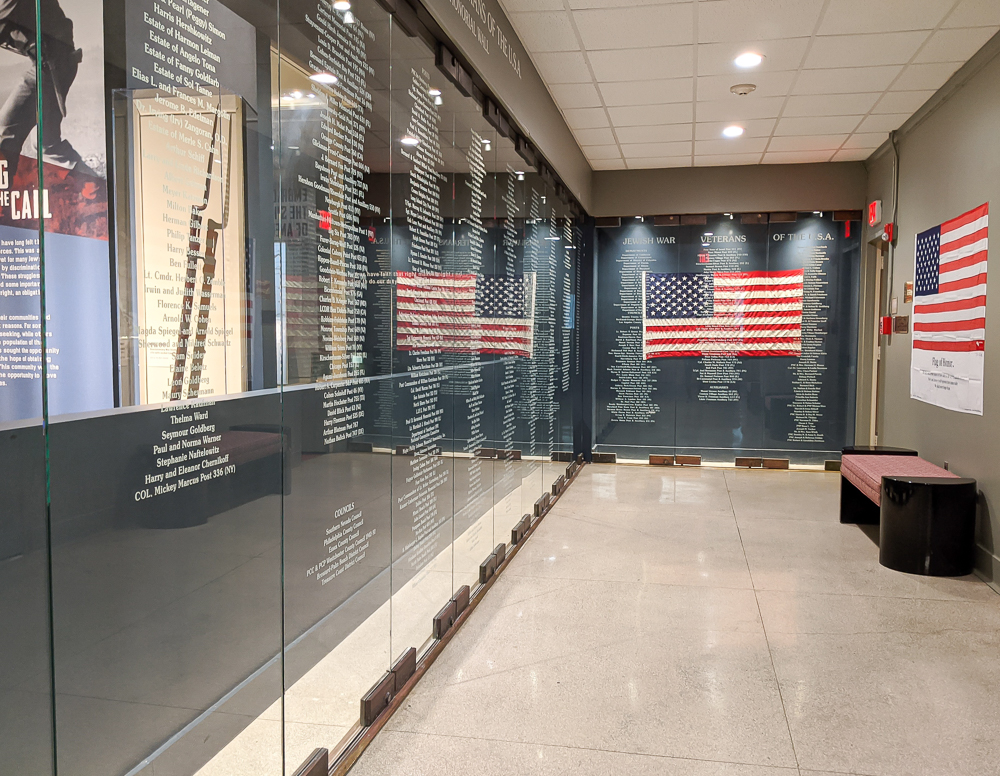

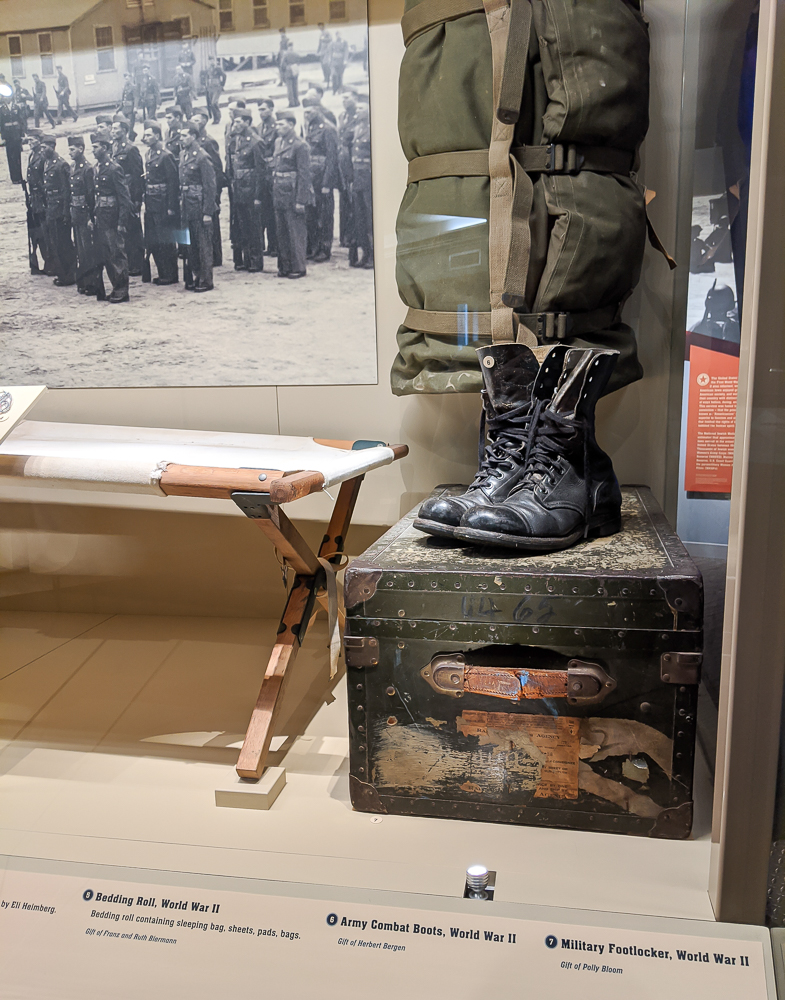
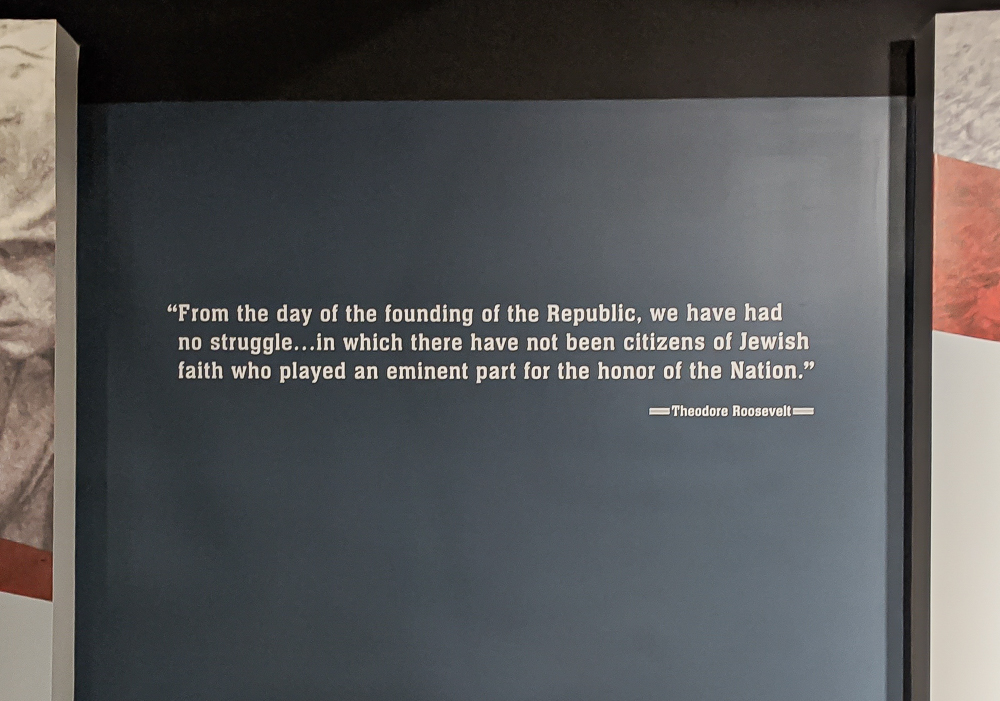
8. International Spy Museum
DC’s International Spy Museum is located just off the National Mall and includes many exhibits dedicated to intelligence gathering, code-cracking, and sabotage in World War II.
The museum aims to educate you on how espionage and intelligence have played an important role in our history. There’s also a long list of artifacts to check out like an Enigma machine and an M-209 cipher machine, for instance.
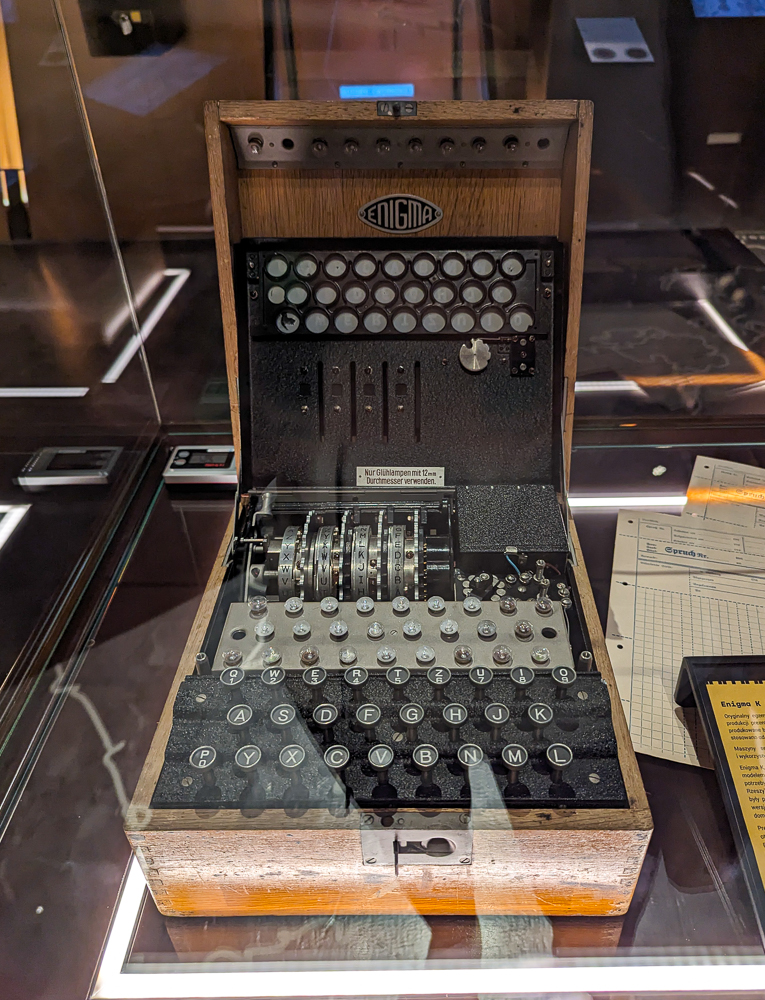
WWII Monuments & Memorials in Washington DC
In addition to great museums, Washington DC is also the home of an incredible number of monuments and memorials, many of them WWII-related. Be sure to stop by these while you’re here:
9. World War II Memorial
The World War II Memorial is one of the largest memorials on the National Mall. It opened to the public on April 29, 2004 and honors all of the 16 million Americans who served during World War II (and the 405,399 who died doing so).
The memorial features 56 granite pillars representing each of the 48 states (at the time), Alaska and Hawaii, as well as the Philippines, Puerto Rico, Guam, the U.S. Virgin Islands, and American Samoa.
The memorial consists of two parts: Atlantic and Pacific. Each features quotes, imagery, and important dates relevant to each theater, and features a large pool with fountains in the center. The Western side of the memorial features the Freedom Wall which is covered in 4,048 gold stars, each one representing 100 Americans who died in the war.


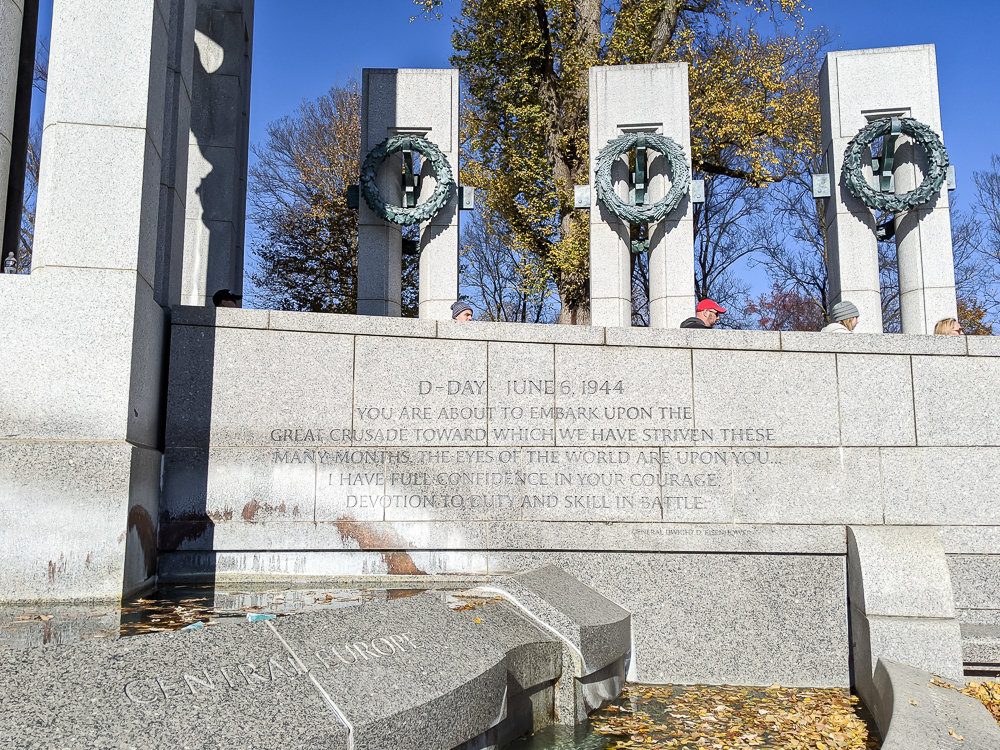
The entire memorial showcases famous quotes about the war, sculptures and reliefs, bronze wreaths, and two huge triumphal arches anchoring the North and South. And that’s just the start of it. Spend some time examining the whole thing (and see if you can find the hidden “Kilroy was here” engraving).
The World War II Memorial is, without a doubt, one of the most striking war memorials you’ll visit, and one of the most memorable of all the WWII sites in Washington DC.
Please note: The World War II Memorial is not a swimming pool; it’s a war memorial. The National Park Service forbids wading in its fountain but so many people ignore this. As a consolation, they do allow you to sit with your feet in the water and nothing more. But while you’re cooling your feet, keep in mind the reason for this in the first place. (see below)
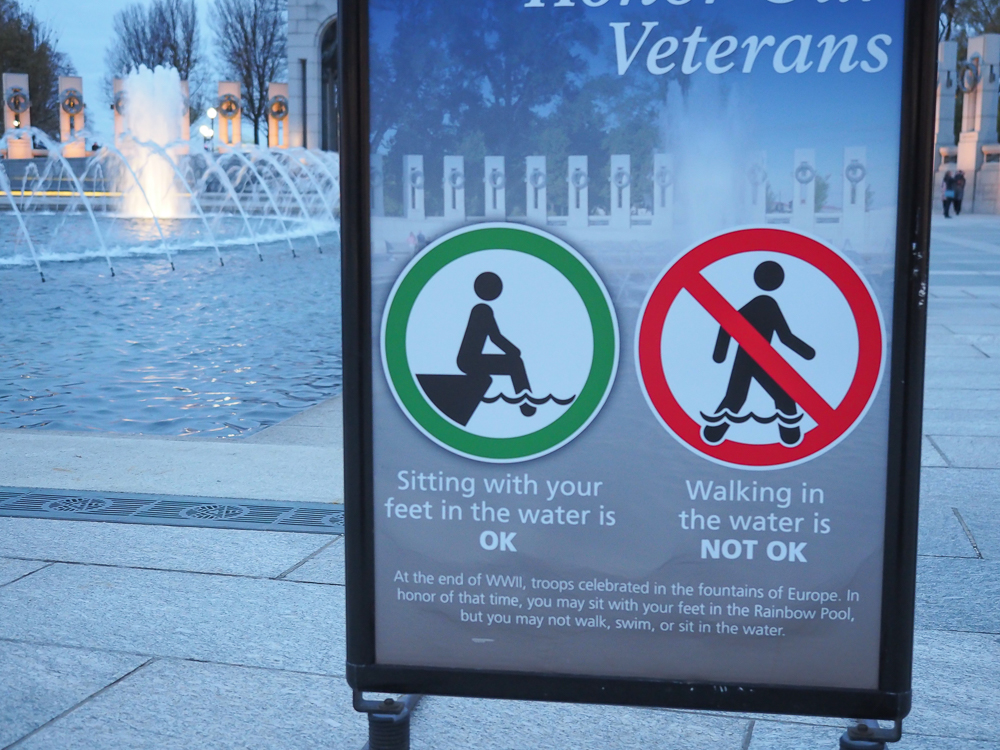
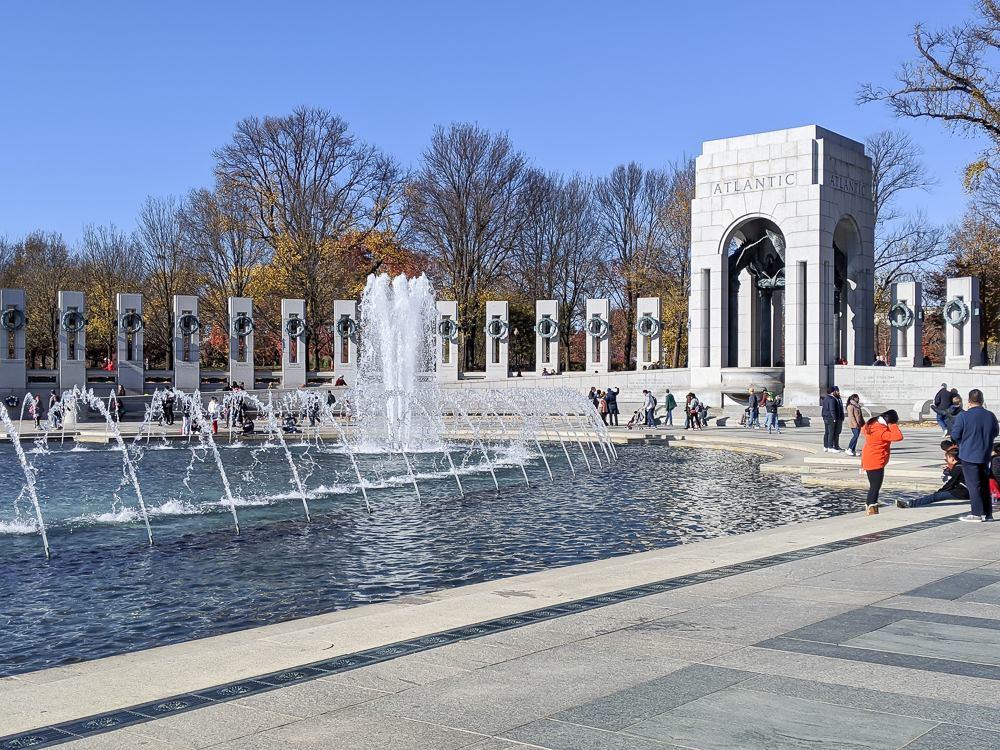
10. U.S. Marine Corps War Memorial
Across the river, over in Alexandria, Virginia, you can visit the US Marine Corps War Memorial, also referred to as the Iwo Jima Memorial. This larger than life monument depicts the famous photo of the flag-raising atop Mount Suribachi on the island of Iwo Jima taken by photographer Joe Rosenthal.
This memorial, while depicting only the flag raising on Iwo Jima, actually honors the memory of all members of the United States Marine Corps who have lost their lives in battle since November 10, 1775. All battles in which members of the Marine Corps have given their lives in service of their country are engraved on the sides of the memorial.
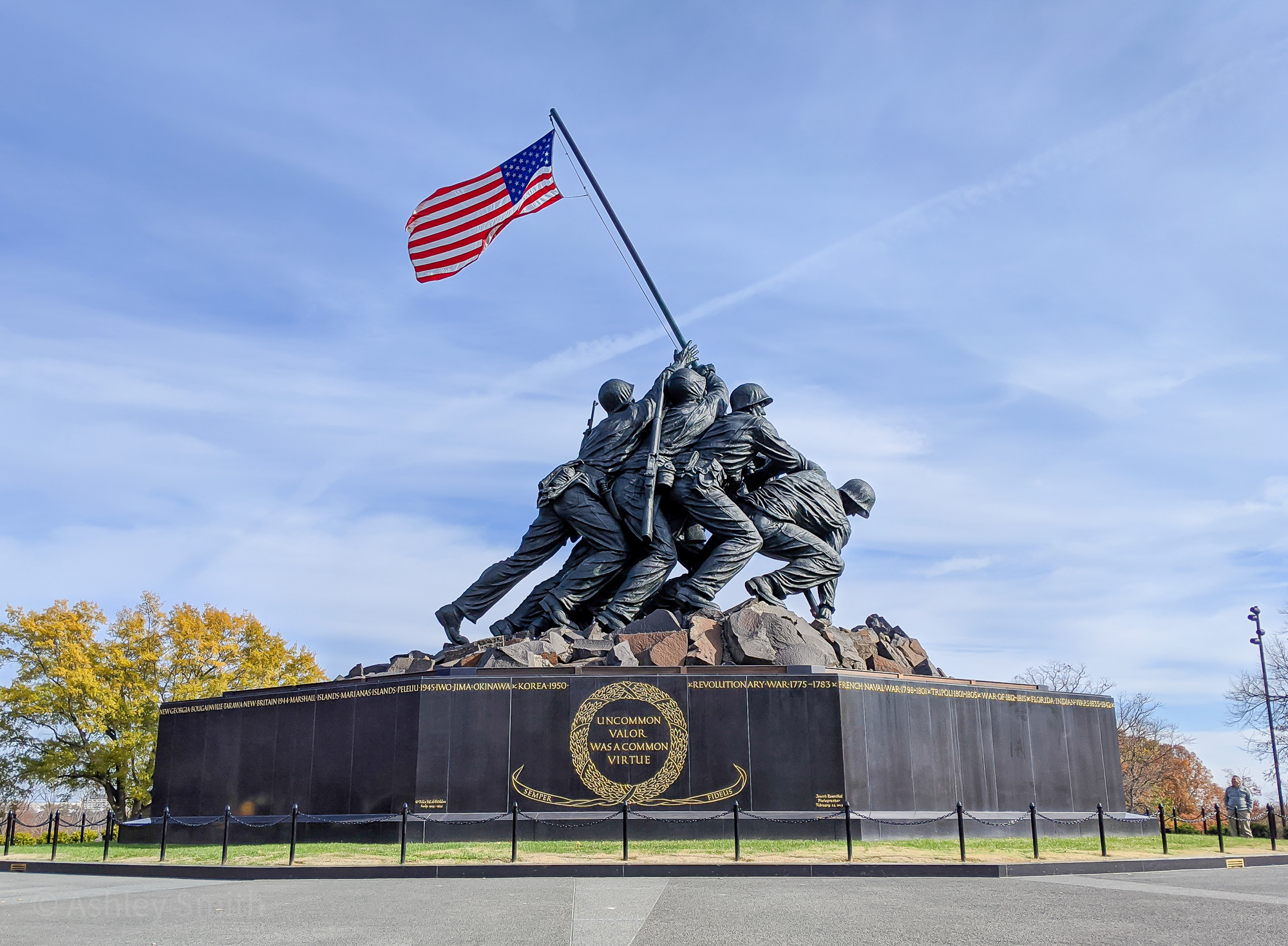
It was sculpted by Felix W. de Weldon shortly after the war using funds donated by US Marines and others. He used three of the survivors from the famous flag raising as models to create the memorial. It was dedicated on November 10, 1954.
To visit this memorial is to enter a state of complete awe. The size of the memorial complemented by reading about the events that led up the famous image is striking. There are informational placards circling the memorial area that cover the Battle of Iwo Jima, the flag raising, the sculpture, and the Marine Corps.
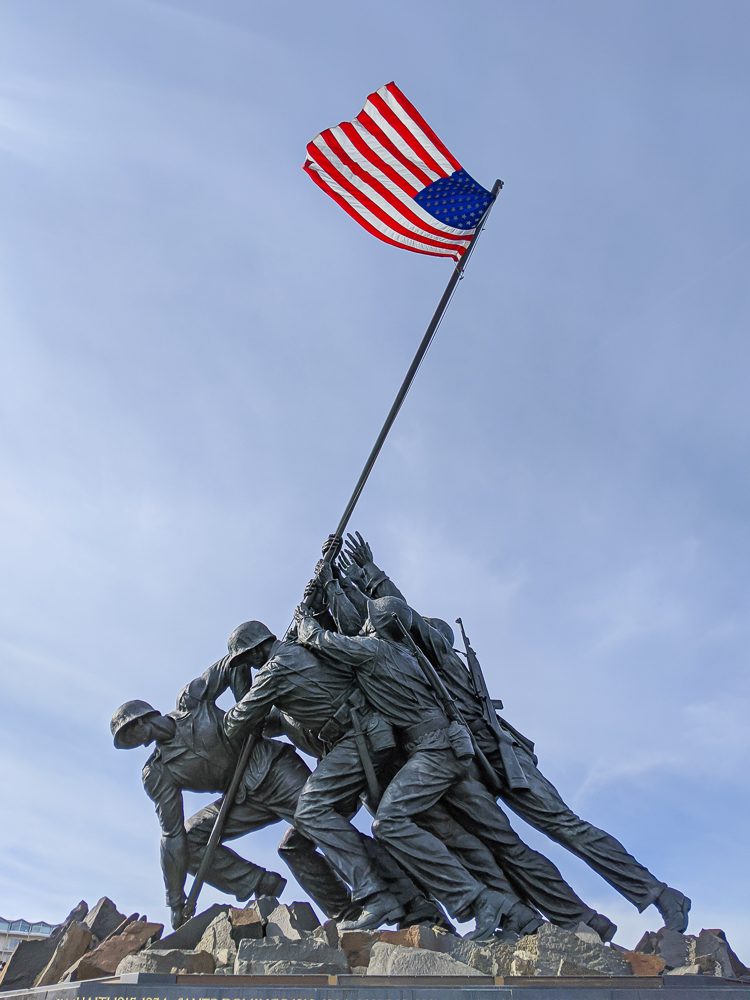
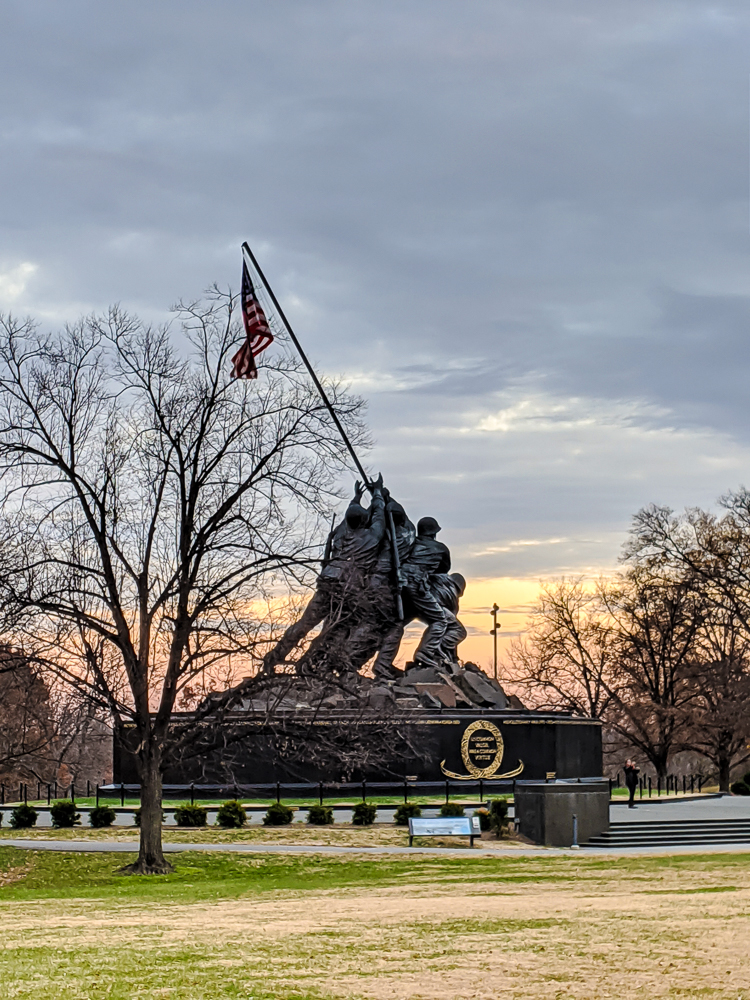
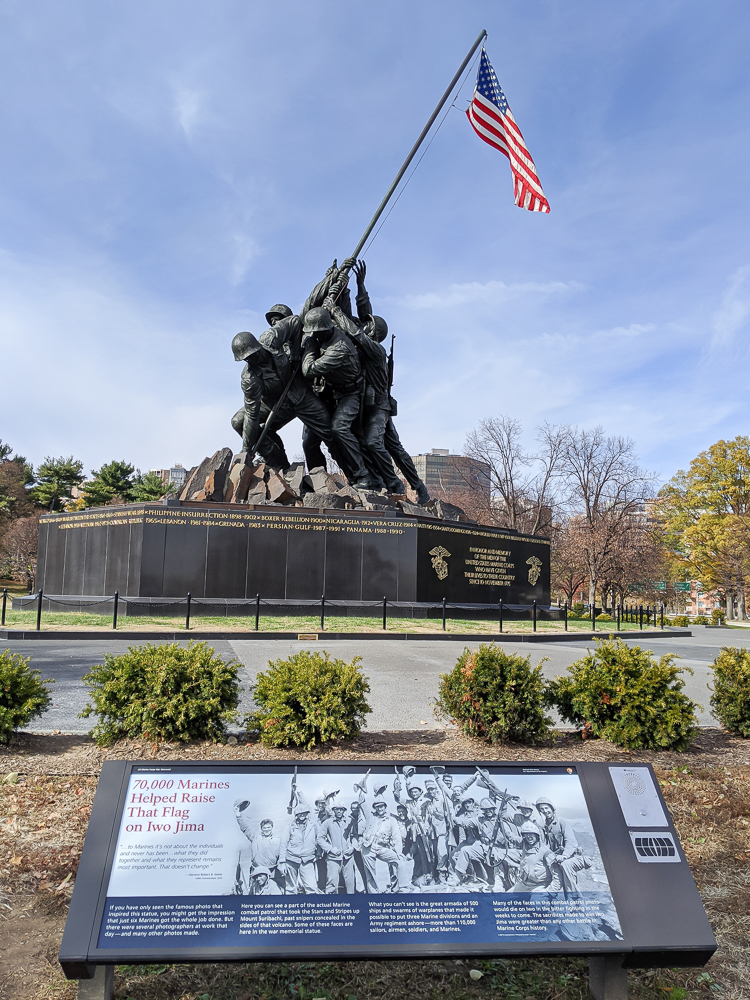
11. Loss and Regeneration
Outside the United States Holocaust Memorial Museum you’ll be able to see the memorial called Loss and Regeneration, by artist Joel Shapiro. It consists of two parts, two large bronze sculptures. One is a large block-shaped piece while the other looks like a collection of haphazard bars.
According to the website, this memorial “addresses the disintegration of families and the tragedy of lives interrupted by the Holocaust.” You’ll also find a poem here that was written by child prisoners at the Terezin Concentration Camp outside Prague.

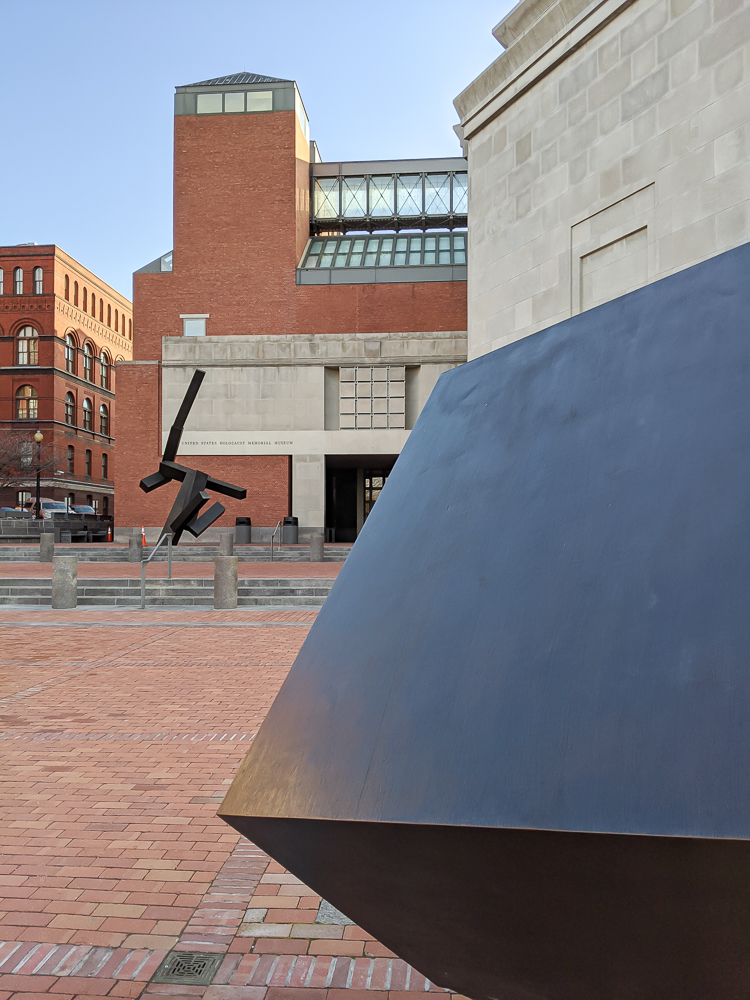
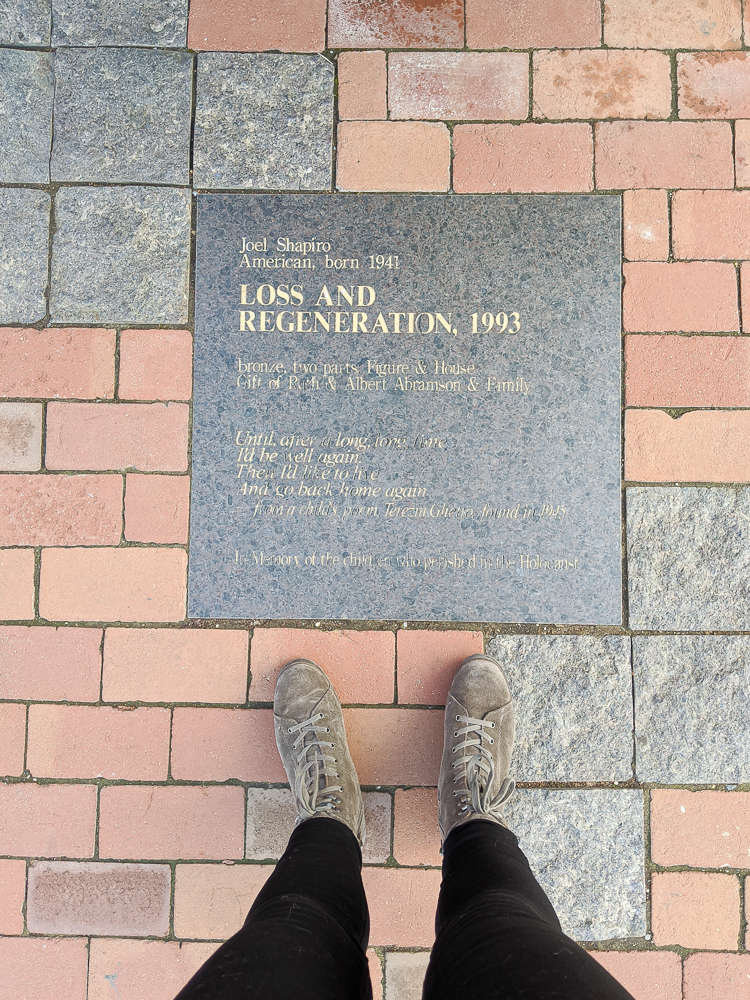
12. The Netherlands Carillon
A 5-minute walk from the Marine Corps Memorial is the Netherlands Carillon which is just a fancy way to say bell tower. This 131-foot tower contains 50 bells and makes pretty music.
It was a gift from the people of the Netherlands in appreciation of all the help they received from the United States during and after World War II. The Carillon was officially dedicated on May 5, 1960.
The Carillon has recently undergone a multi-million dollar restoration and was rededicated on May 5, 2022. (But I last visited shortly before this so that’s why it looks so terrible in my photos.) In the spring, there’s a beautiful tulip garden at its base.
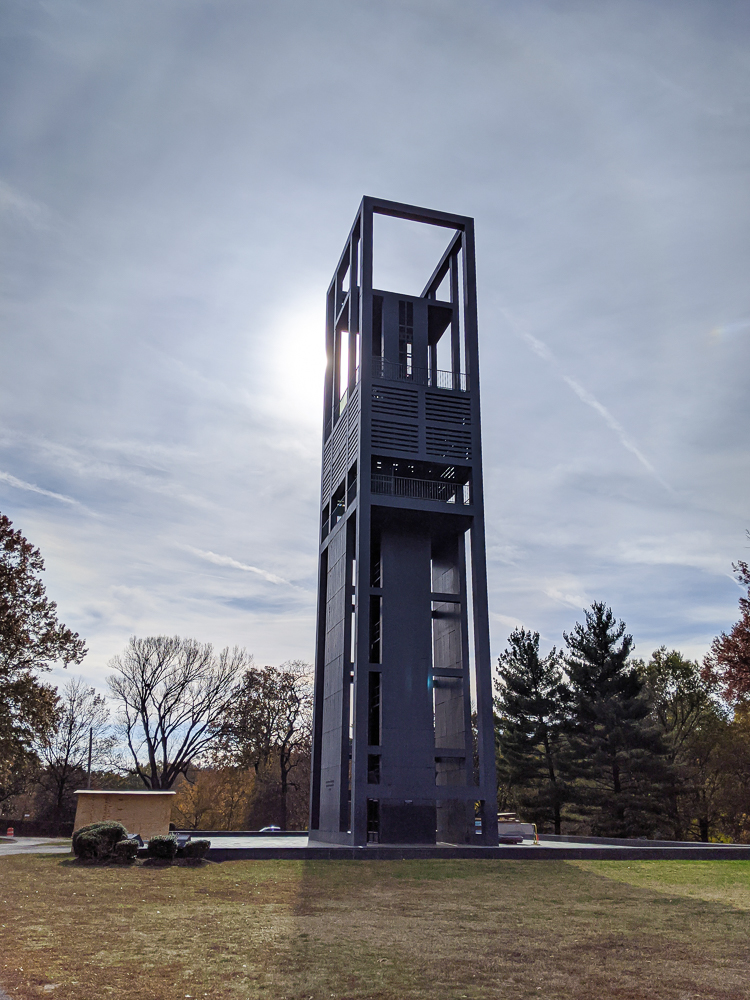
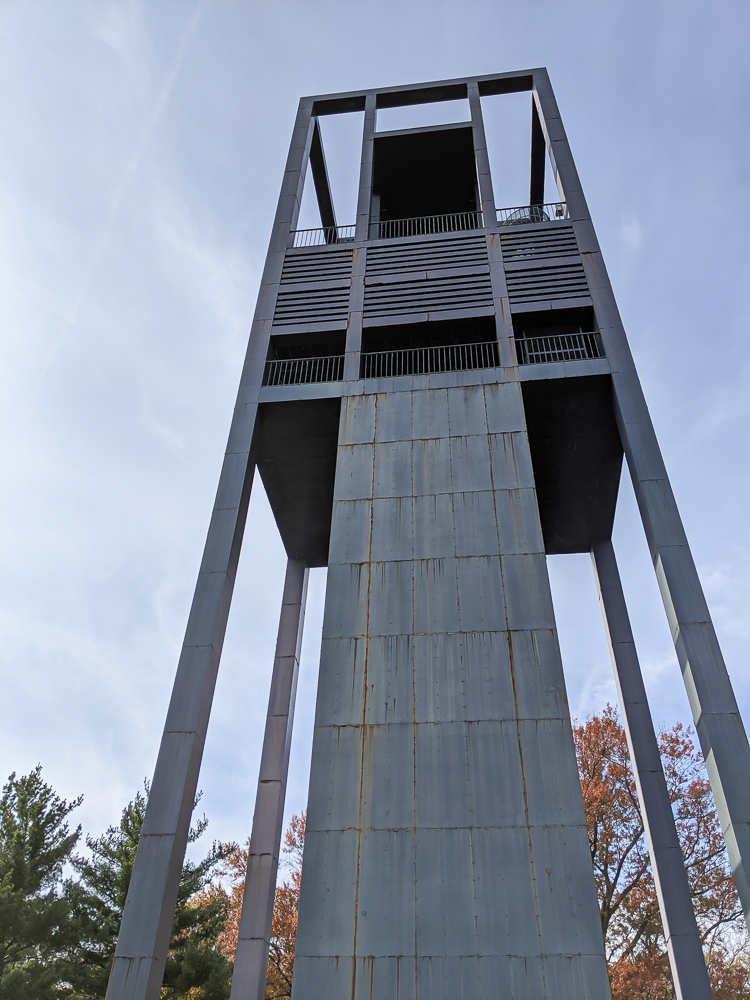

13. Japanese American Memorial
Officially named the Japanese American Memorial to Patriotism During World War II, this memorial honors Japanese Americans who patriotically supported the U.S. during the war despite their unjust treatment. This memorial is only a couple of blocks away from Union Station and was completed in June of 2001.
14. Dwight D. Eisenhower Memorial
The Dwight D. Eisenhower Memorial is the National Mall’s newest memorial, having opened only in September 2020. It features many statues, inscriptions, and a “first of its kind tapestry that spans the length of the memorial and features and image of the Normandy coastline.”
The memorial is split into two parts: Eisenhower as General and Eisenhower as President. There’s a lot to see (and learn about) here, and you can even take an audio tour at the memorial. There’s also a small gift shop here too.

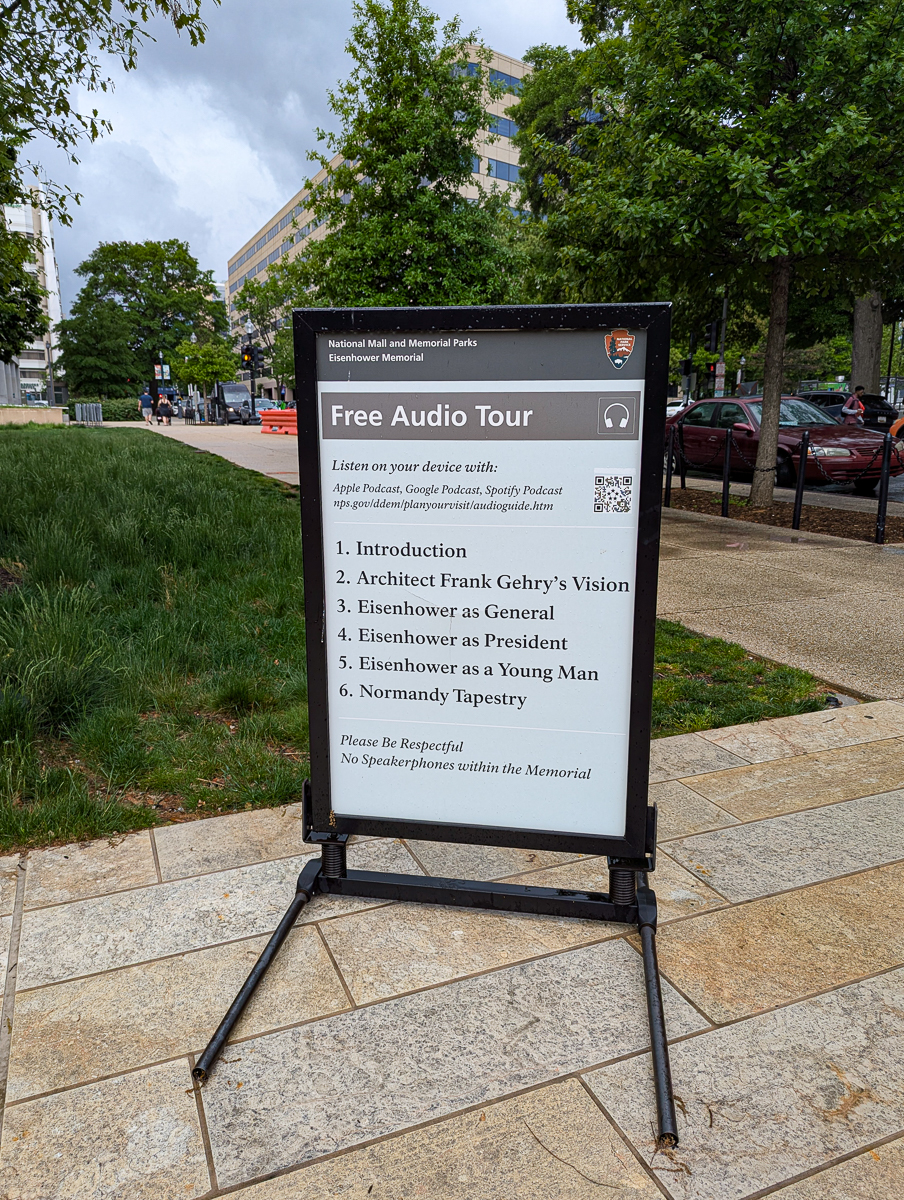
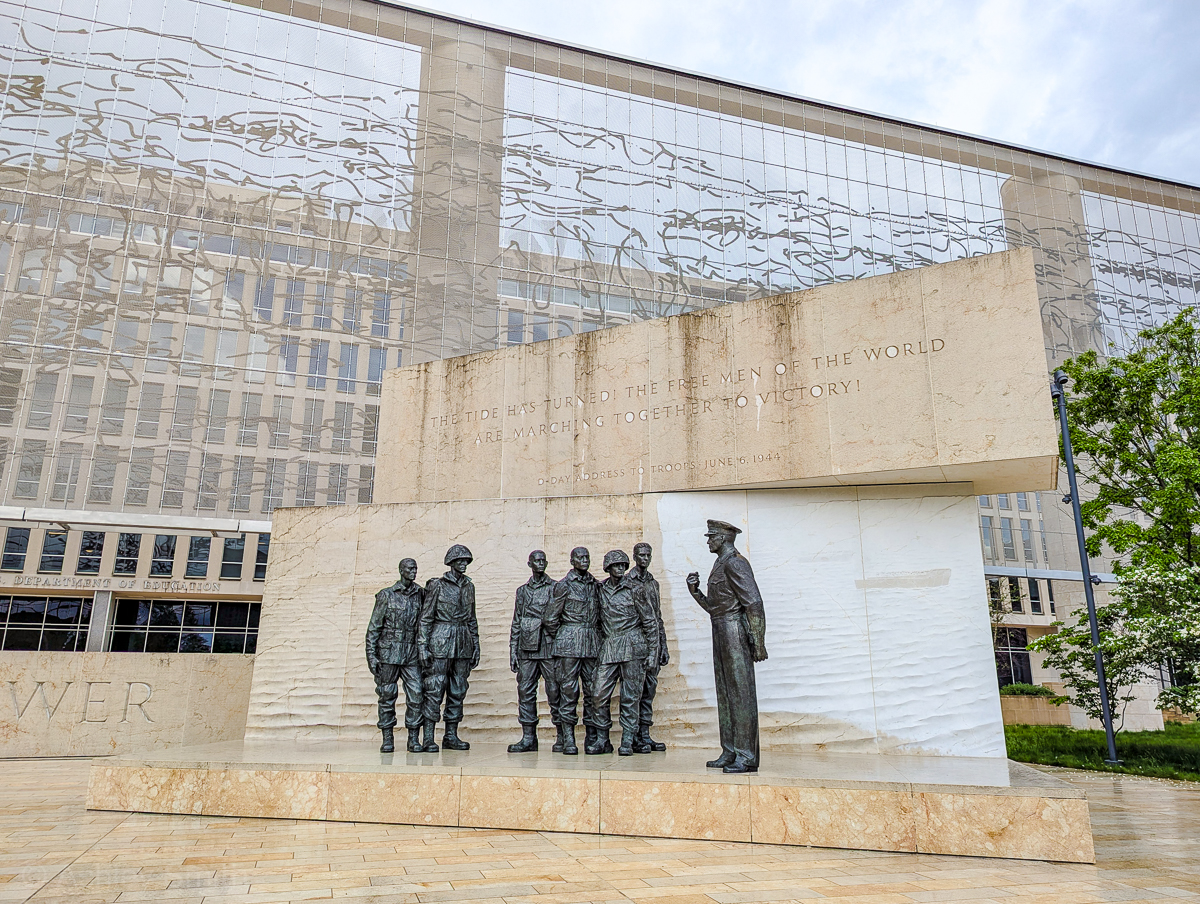
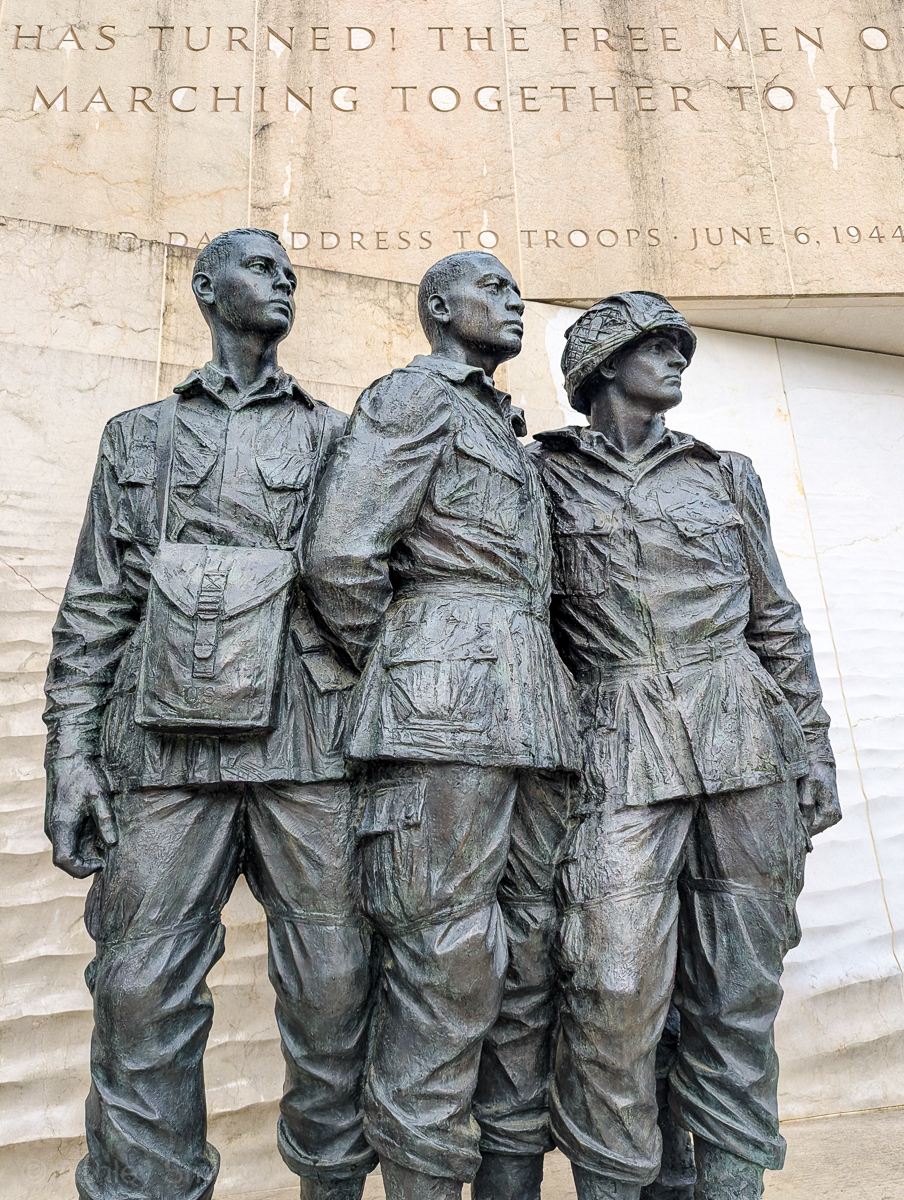
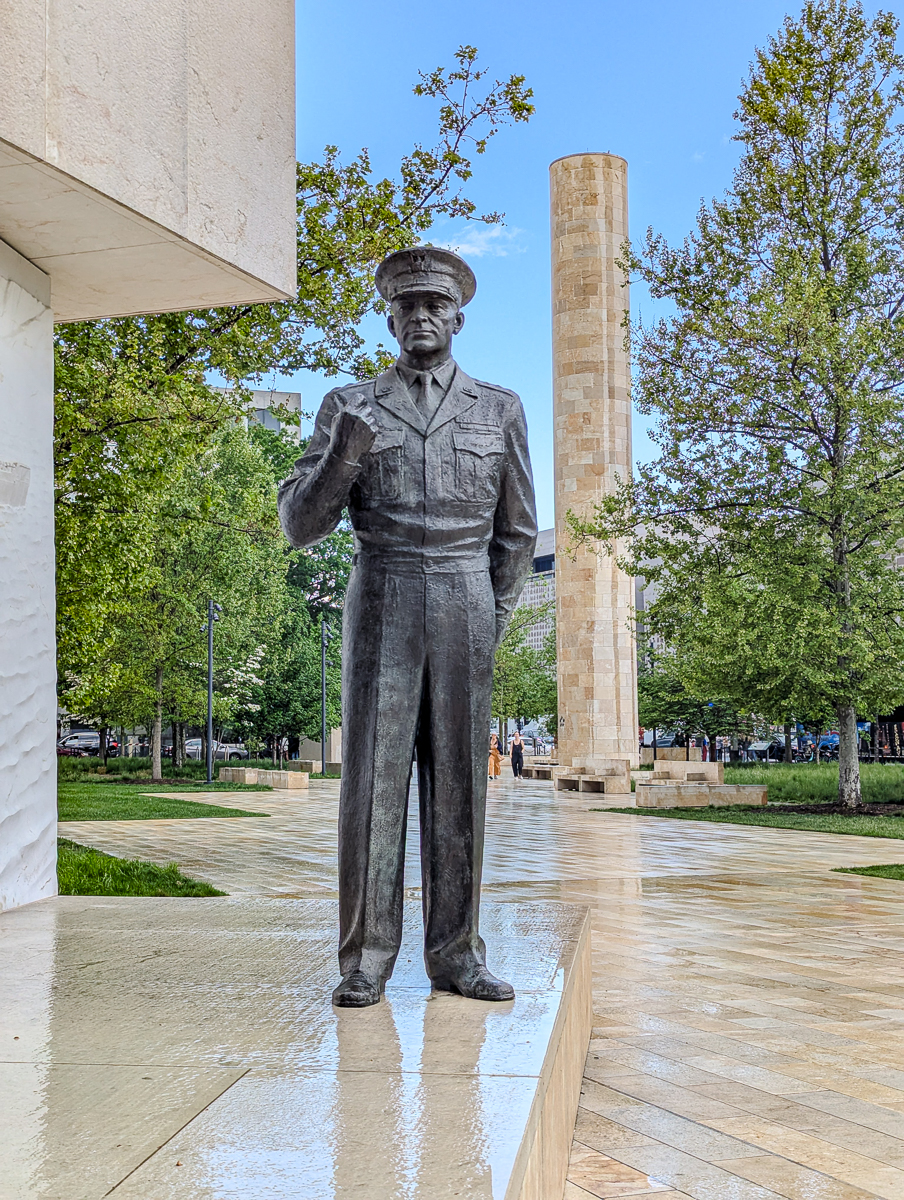
Other WWII sites in Washington DC
Beyond museums and memorials, here are a few more awesome WWII sites in Washington DC you shouldn’t miss.
15. Arlington National Cemetery
Arlington National Cemetery serves as the final resting place for more than 400,000 US service members. Famous graves include those of John F. Kennedy, Robert Kennedy, President William Howard Taft, Robert Todd Lincoln, John Glenn, Abner Doubleday, and so many more. As far as WWII is concerned, visit the spots listed below.
The Tomb of the Unknown Soldier
This monument is dedicated to all deceased U.S. service members whose remains have never been identified. The internment of the WWII Unknown took place here in 1958 and the Tomb has been guarded 24 hours a day, 7 days a week since July 2, 1937. The Changing of the Guard Ceremony is an absolute must-see.
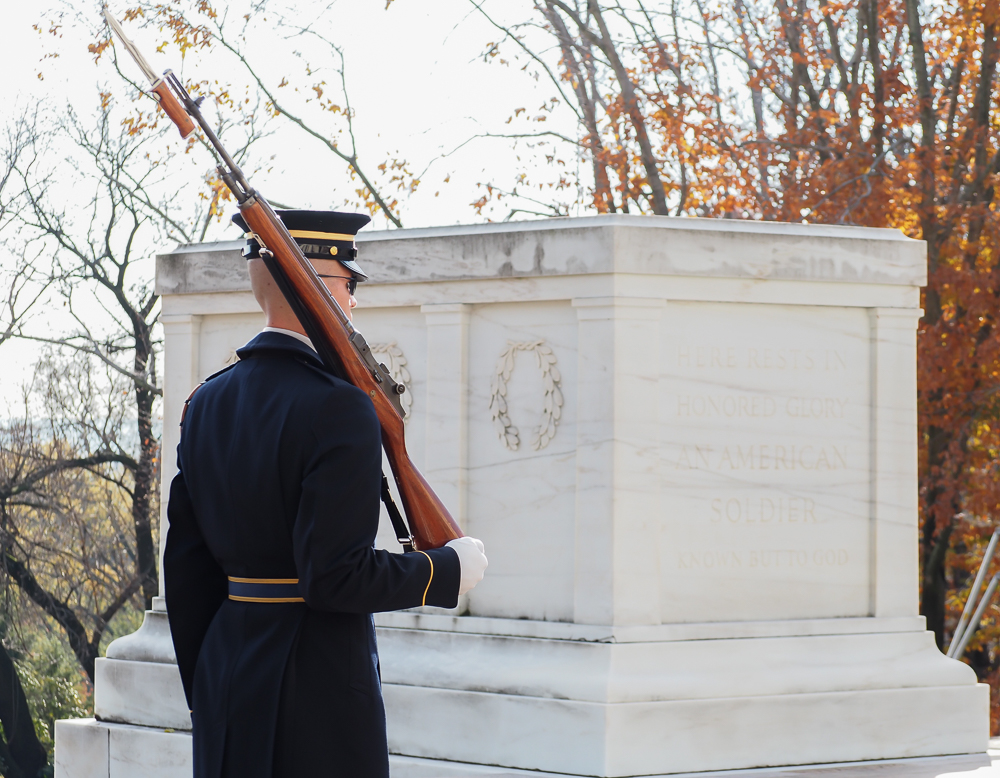
The Battle of the Bulge Memorial
The Battle of the Bulge, referred to by Winston Churchill as “undoubtedly the greatest American battle” of World War II, has a monument of its own at Arlington National Cemetery. It was dedicated on May 8, 2006 and can be found at the center of the western border, in section 21 on the Arlington National Cemetery map.
The graves of 49 WWII Medal of Honor Recipients
Including Audie Murphy, the most decorated WWII soldier who earned every possible military combat award for valor (including some from Belgium and France as well)
Other sites to see
- Seabees memorial
- WWII Memorial Tree
- USS Serpens Monument
- Chaplains Hill
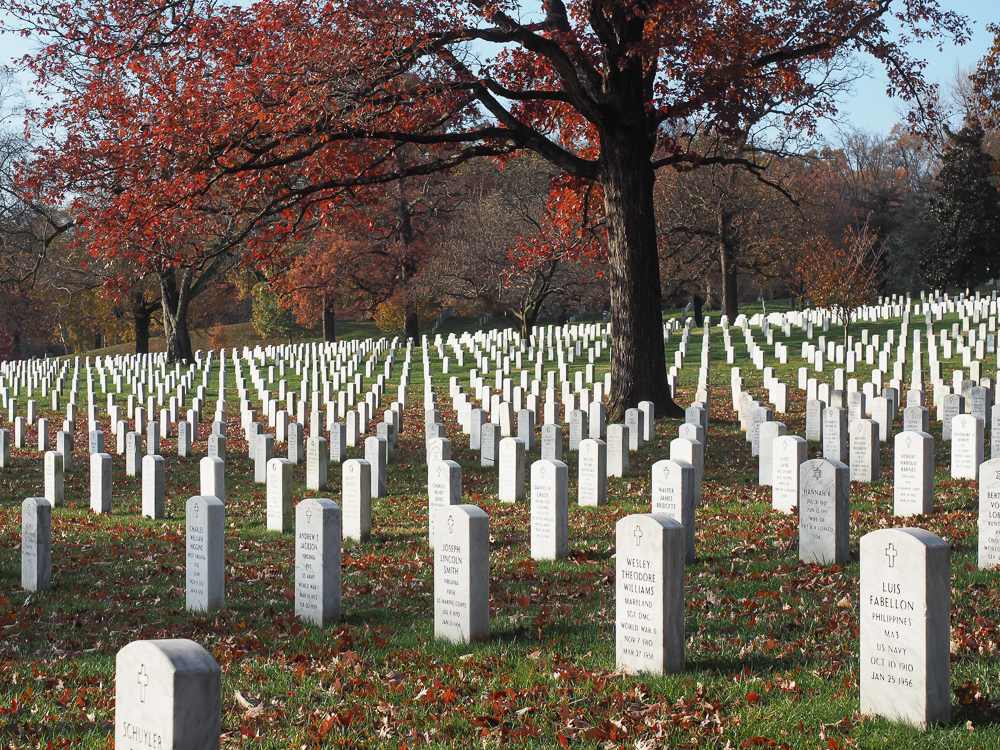
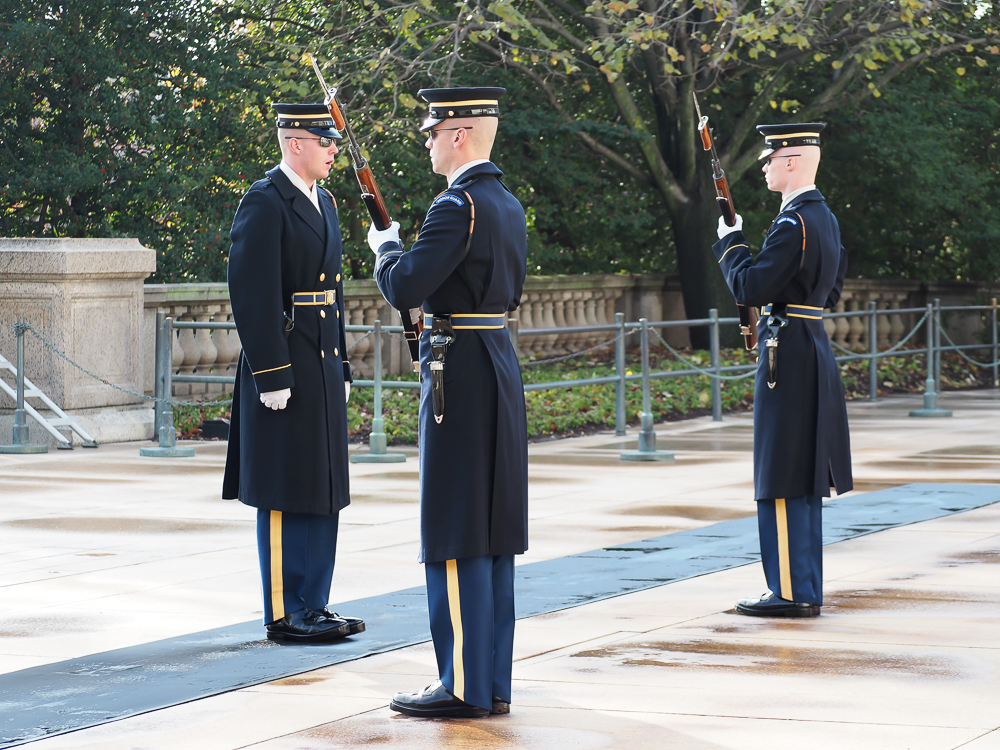
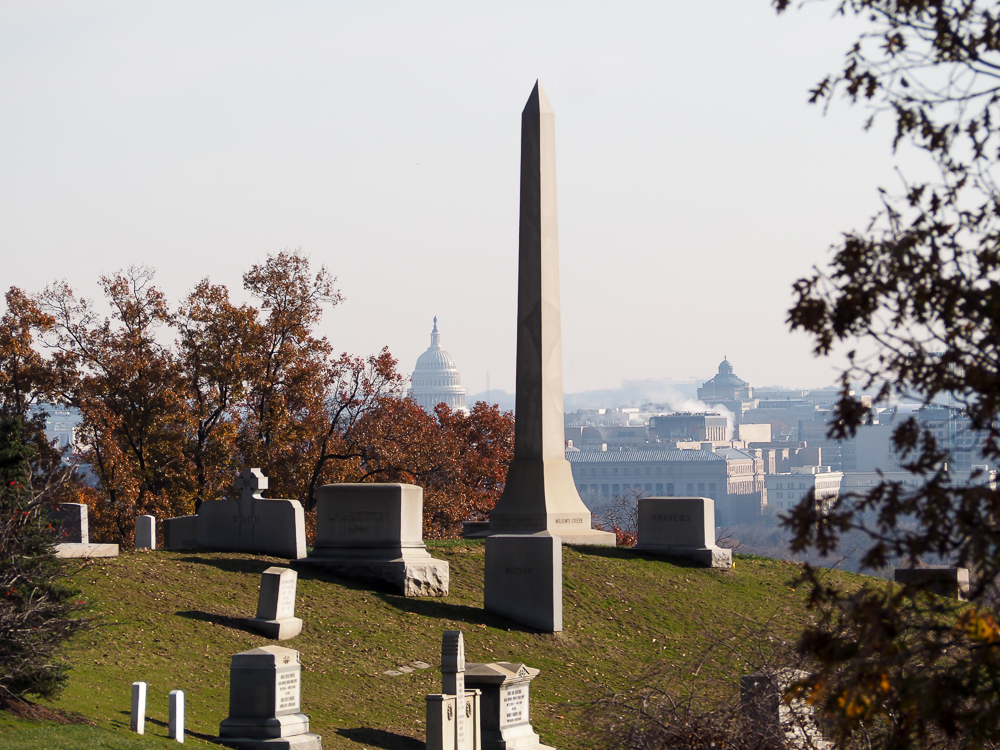
16. The Pentagon
Also located in Arlington, Virginia is the Pentagon. I’m sure you’ve heard of it; now let’s go inside! It’s true–you can visit the Pentagon as a civilian. It’ll take a few weeks/months of planning, a thorough application process, and a few screening methods, but you can take a guided tour. What you can’t do, however, is use their restroom.
Inside the Pentagon you can take a guided tour through a few of the spaces they’re actually okay with you seeing. You’ll get to see the Visitors Center, the indoor 9/11 memorial (the Pentagon was hit that day too, remember?), the interior courtyard, and a few of the corridors inside–one of them being the MacArthur Corridor.
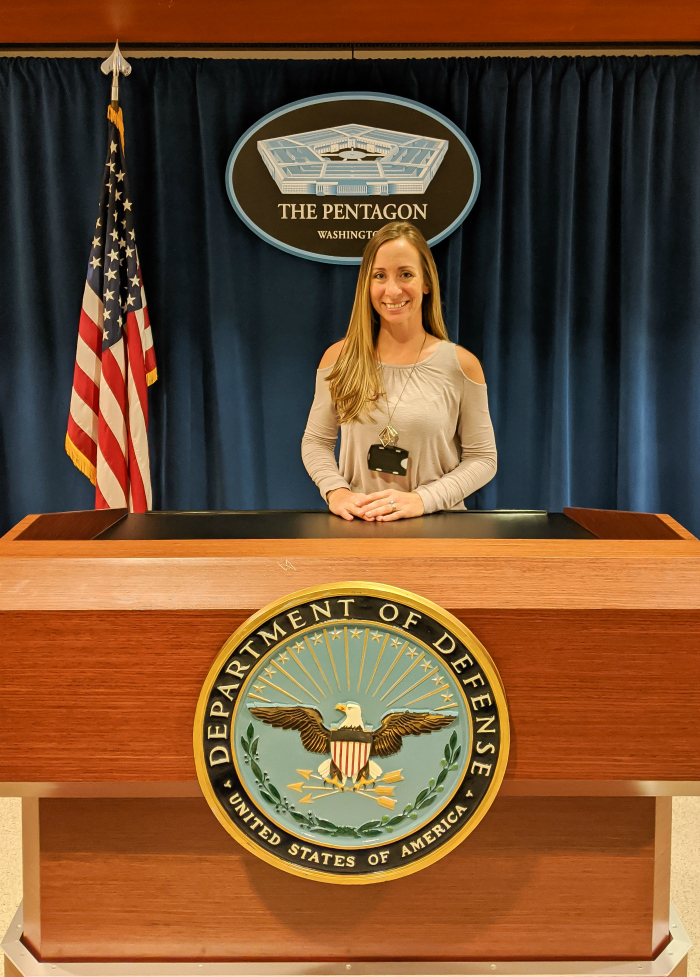
The MacArthur Corridor
The MacArthur Corridor at the Pentagon is dedicated to General Douglas MacArthur, five-star Army general and Field Marshal of the Philippine Army during World War II.
As you walk through it you’ll get to see MacArthur’s Medal of Honor, his uniforms, and his weapons. It’s all pretty spectacular, made even more so by the fact that you you’re not allowed to take any photos. The only way you’ll ever get to see these artifacts is by touring the Pentagon and it is so worth it.
How to visit the Pentagon
There’s a lot involved in getting to tour the Pentagon, so if this is something you’d like to do, you should get on top of that like yesterday. This page has all the info you need: defense.gov/Pentagon-Tours.
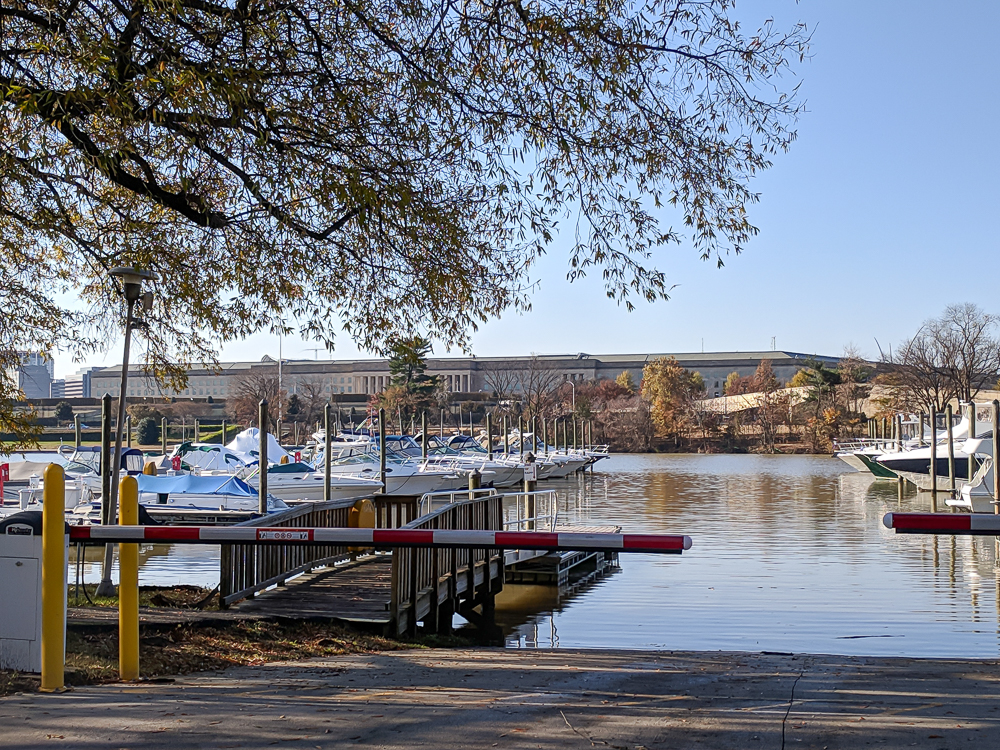
17. The Anne Frank Tree
Among the plethora of trees on the lawn of the United States Capitol building is a small sapling referred to as the Anne Frank Tree. This little baby was grown from the chestnut tree outside Anne Frank’s secret annex in Amsterdam. She often wrote about this tree in her diary as it was one of the few things she could see while in hiding, and she loved it.
That original tree survived until 2010 when it was blown down by strong winds. However, 11 saplings were grown from her tree and have been distributed to various locations around the world. In 2014, one of them made it here to the Capitol Lawn.
If you’re in the area, it’s worth a quick visit. It’s a quaint little stop on the list of WWII sites in Washington DC, but it’s much bigger when you put it into context. Pro tip: I’ve marked the exact location on the map above, otherwise it’s pretty tough to find.
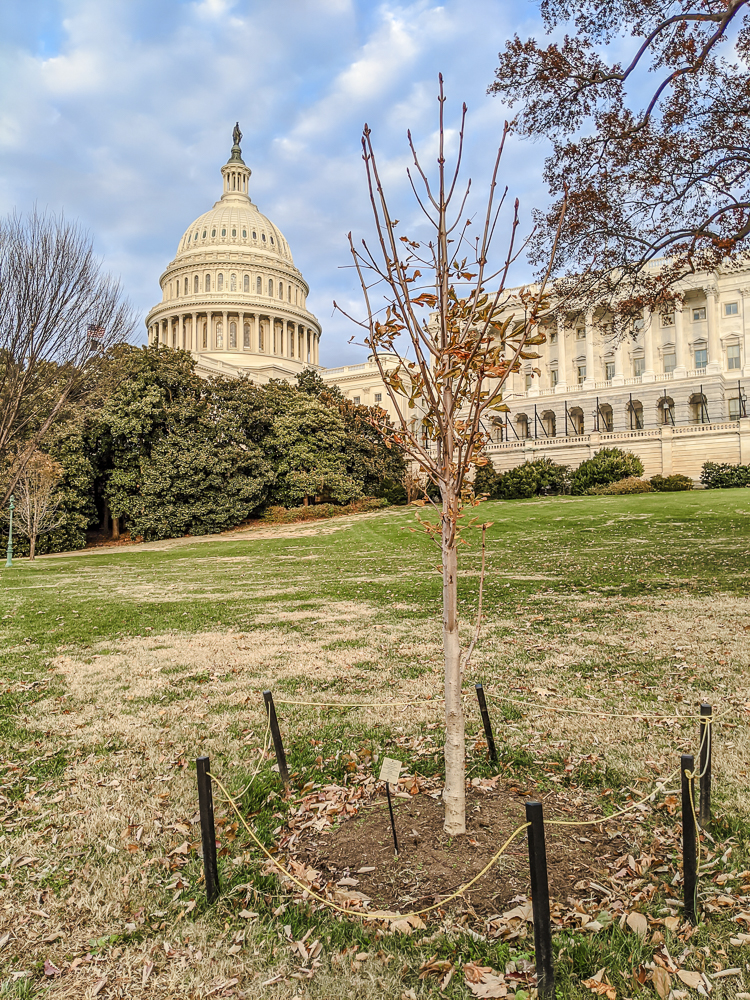
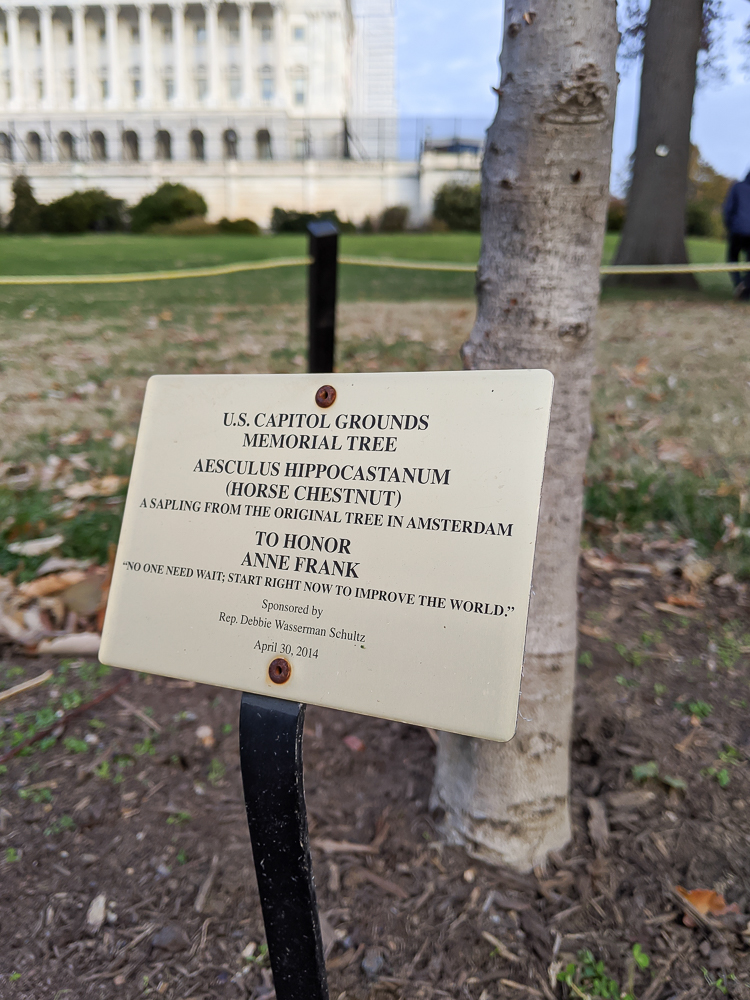
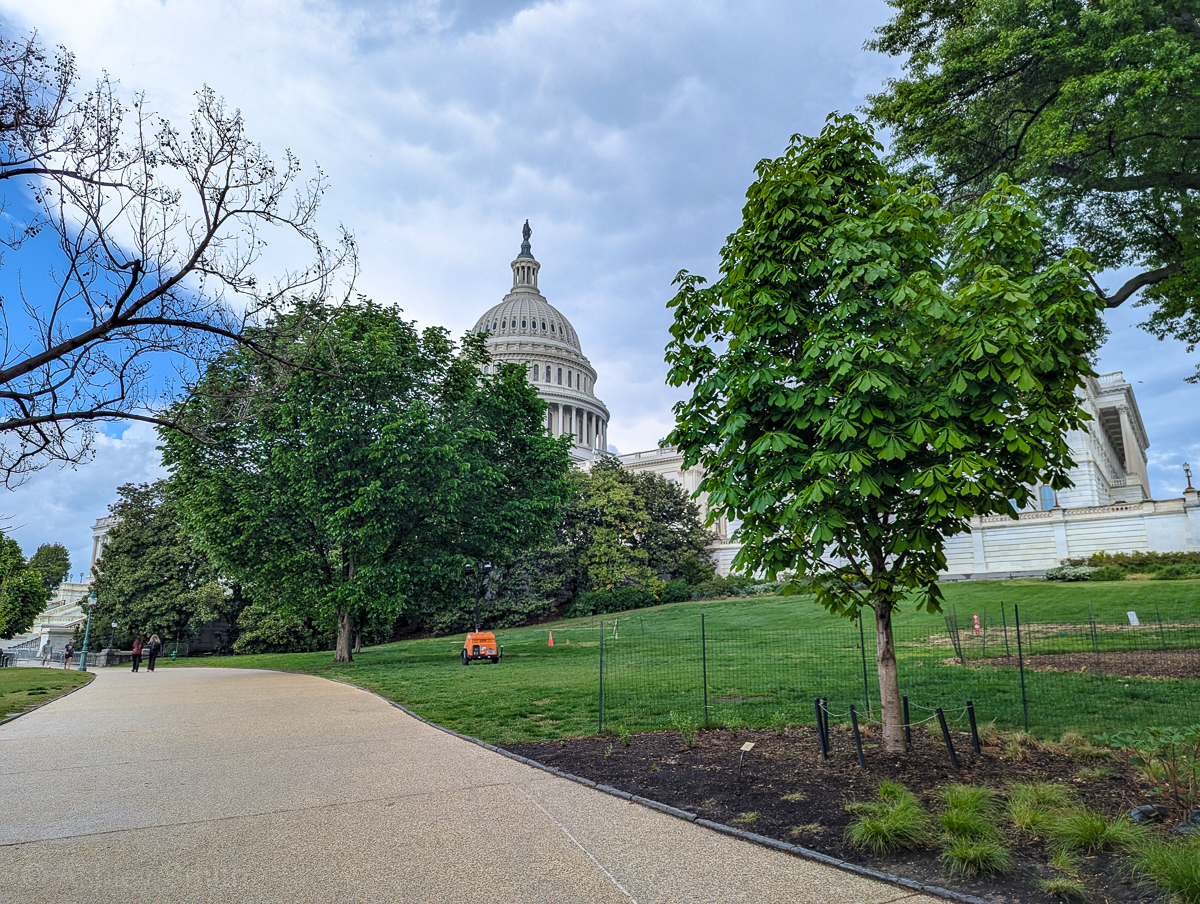
And while you’re there, check out this excellent guided tour of the US Capitol (with skip-the-line privileges include
18. White House Visitor Center
Whether or not you’ll be taking a tour of the White House, you can still visit the White House Visitor Center which is open to the public. There are a number of interesting exhibits inside, one of which features the desk at which President Franklin D. Roosevelt sat when giving his wartime “Fireside Chats.”
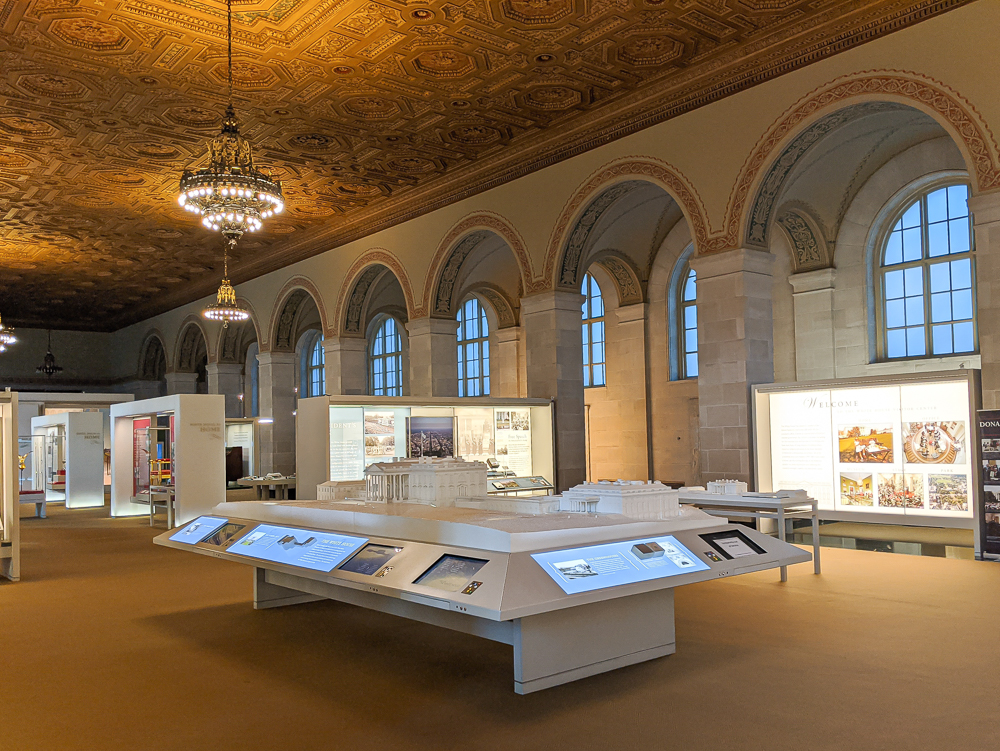

19. Spirit of American Youth statue
Inside the lobby of the Homer office building here in Washington DC, you can find a replica statue of the original Spirit of American Youth Rising from the Waves. The original sculpture by Donald Harcourt de Lue stands prominently in the center of the memorial pavilion at Normandy American Cemetery at Omaha Beach.
The one here in DC is much smaller than the original but is a cast of the original, one of only a few that exist.

20. Washington Monument
If you decide to head up to the top of the Washington Monument while you’re visiting, you’ll find WWII history up here too! In the viewing area at the top, you’ll find informative signage describing DC during the WWII years, complete with photos of the city from that time. Plus, you get to see the entire World War II Memorial from up above which is really stunning!
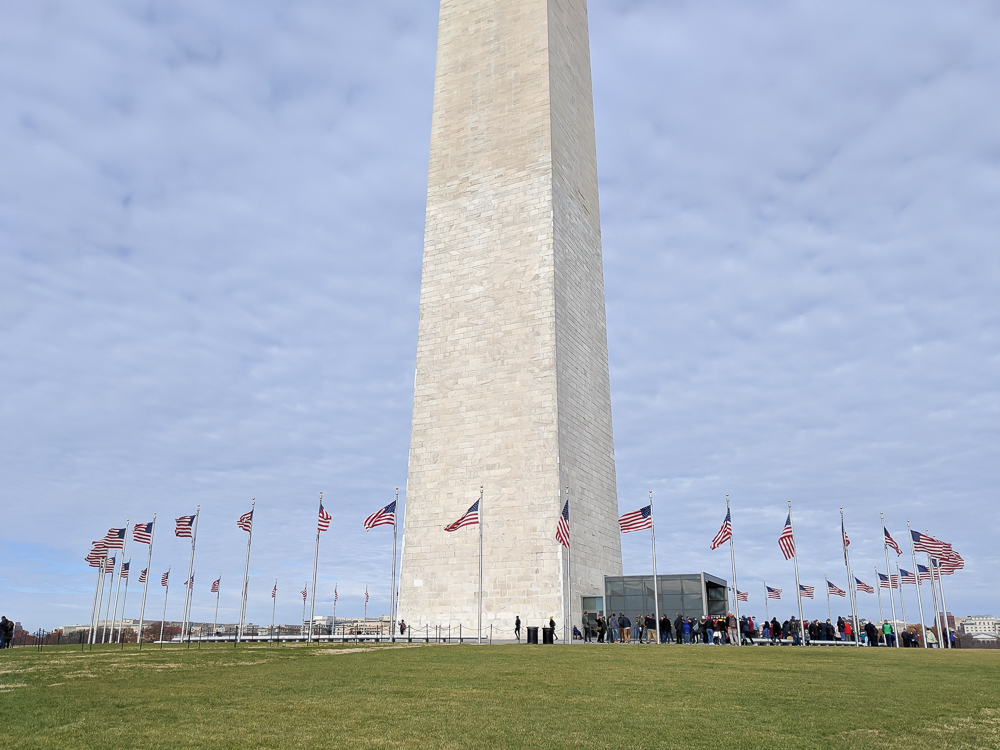
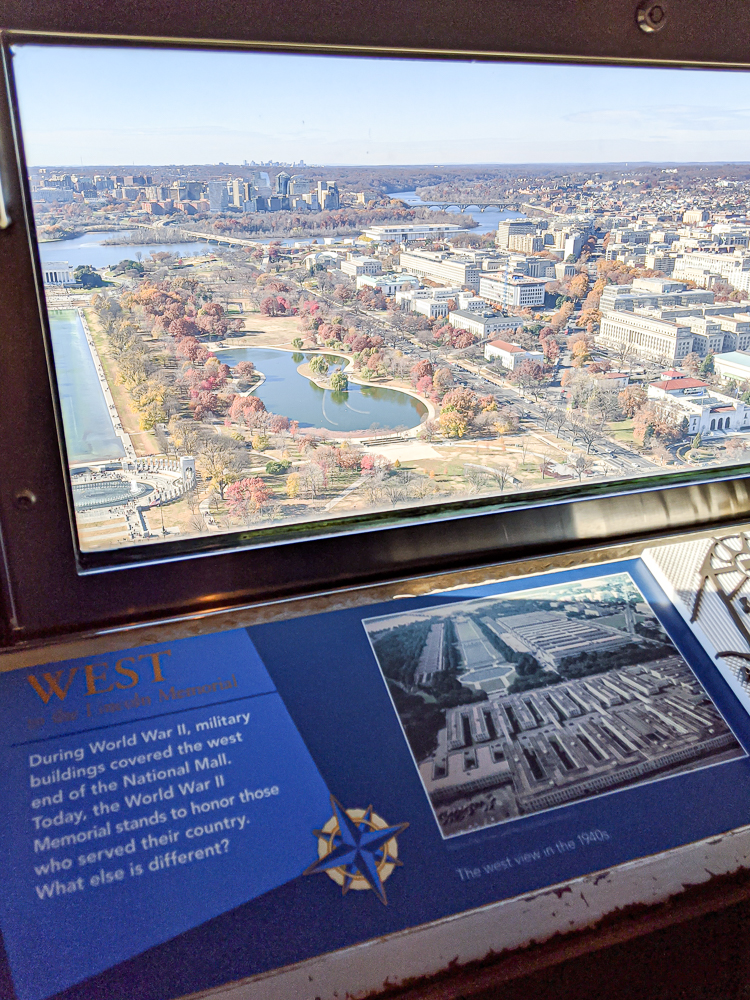
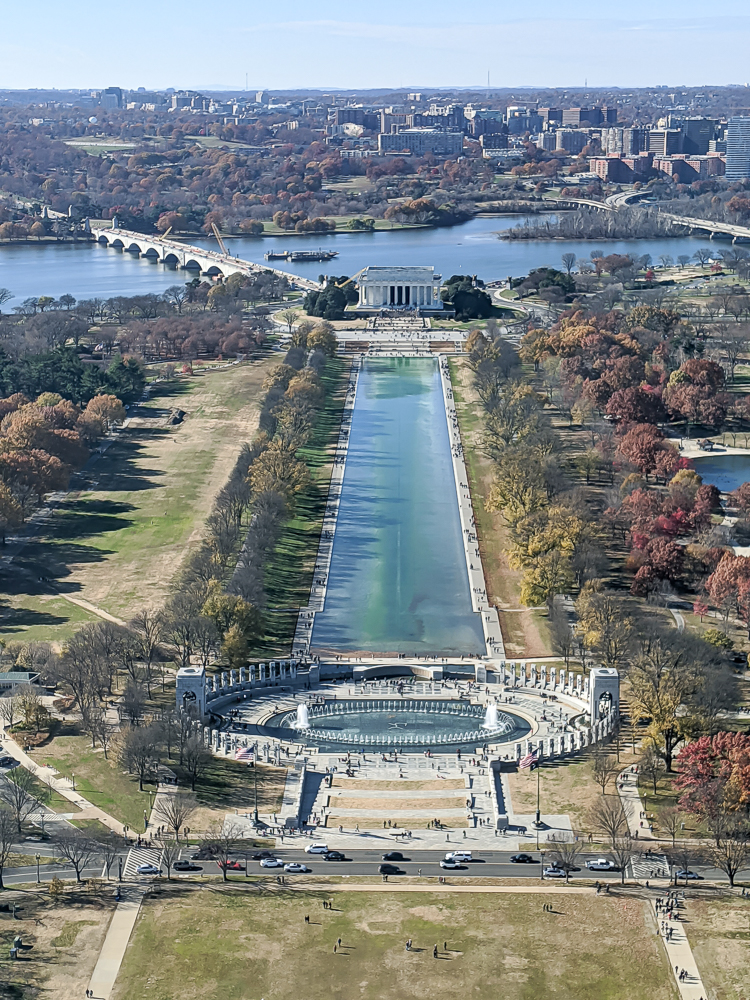
Where to stay in Washington DC
History buffs rejoice! There’s no shortage of historic hotels in Washington DC; the only problem is narrowing them down. Start here:

WWII tours in Washington DC
Check out these guided tour options that cover much of what I’ve mentioned in this post:
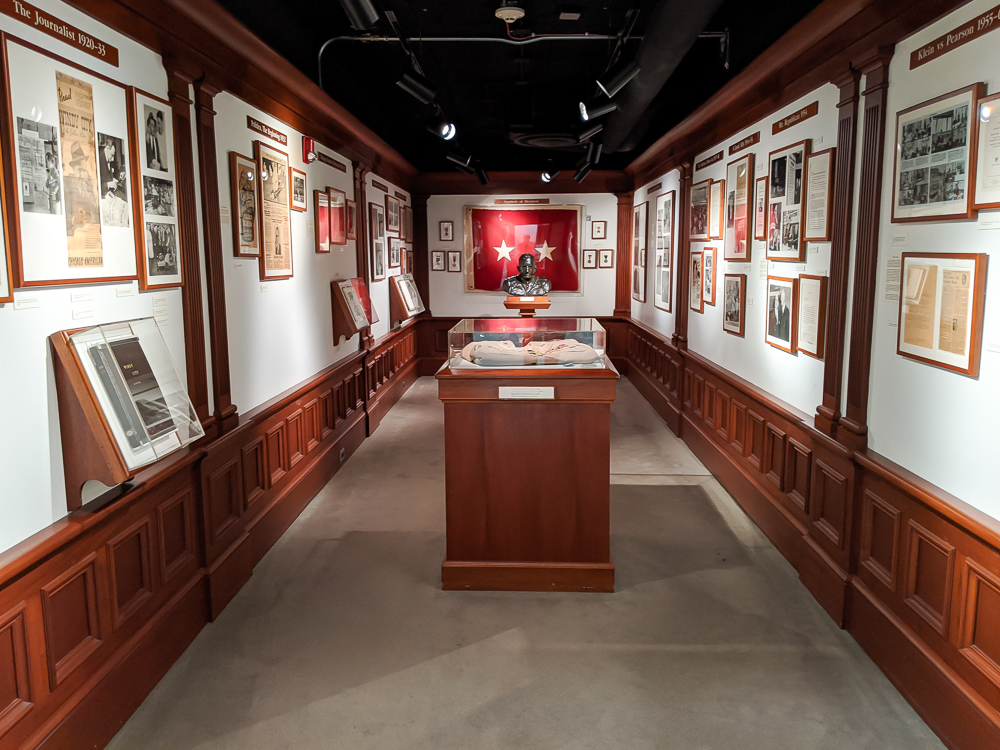
What to read before visiting the WWII sites in Washington DC
Take a look at these books if you’d like to get a head start on some of the stuff you can learn at Washington DC’s WWII sites:
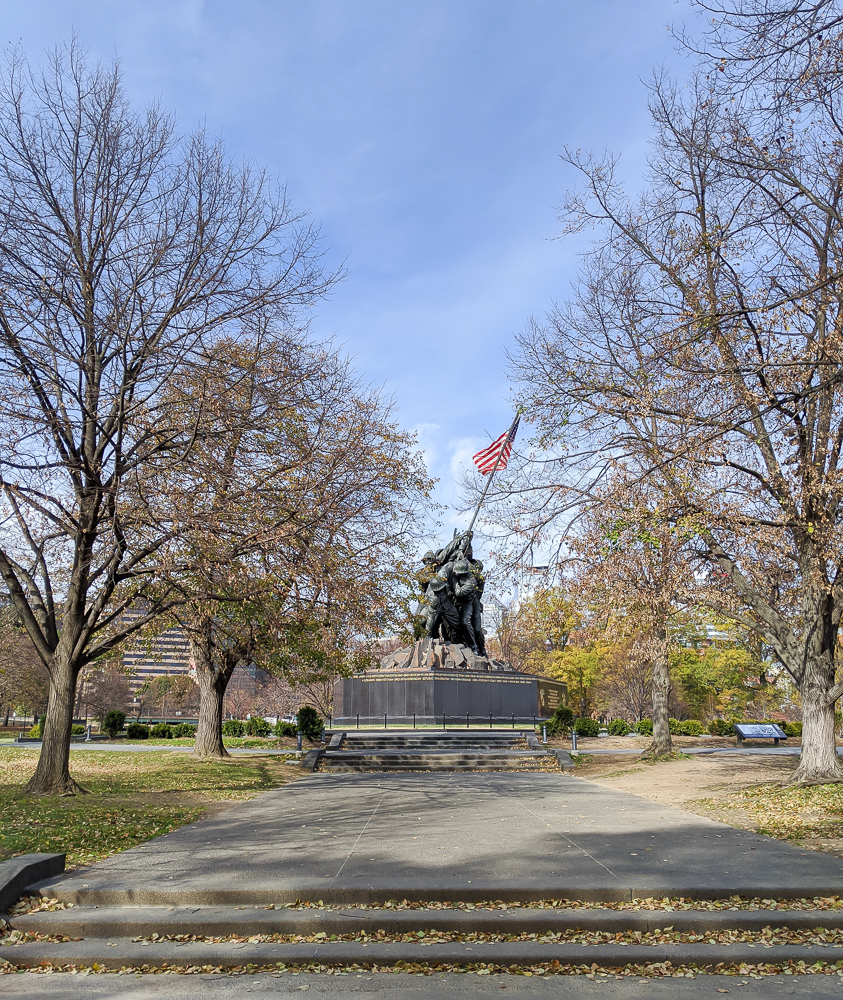
More info for your trip to DC
- Hotels: Find great places to stay on Booking.com (my go-to). Expedia and Hotels.com are worth checking too. VRBO is best for apartment rentals.
- Rental cars: Check out the best local rental car deals here.
- For more local tours, check out all the options from Viator and Get Your Guide.
Like this post? Have questions about any of the WWII sites in Washington DC? Let me know in the comments below. Have a great trip!

Save this info, pin these images:
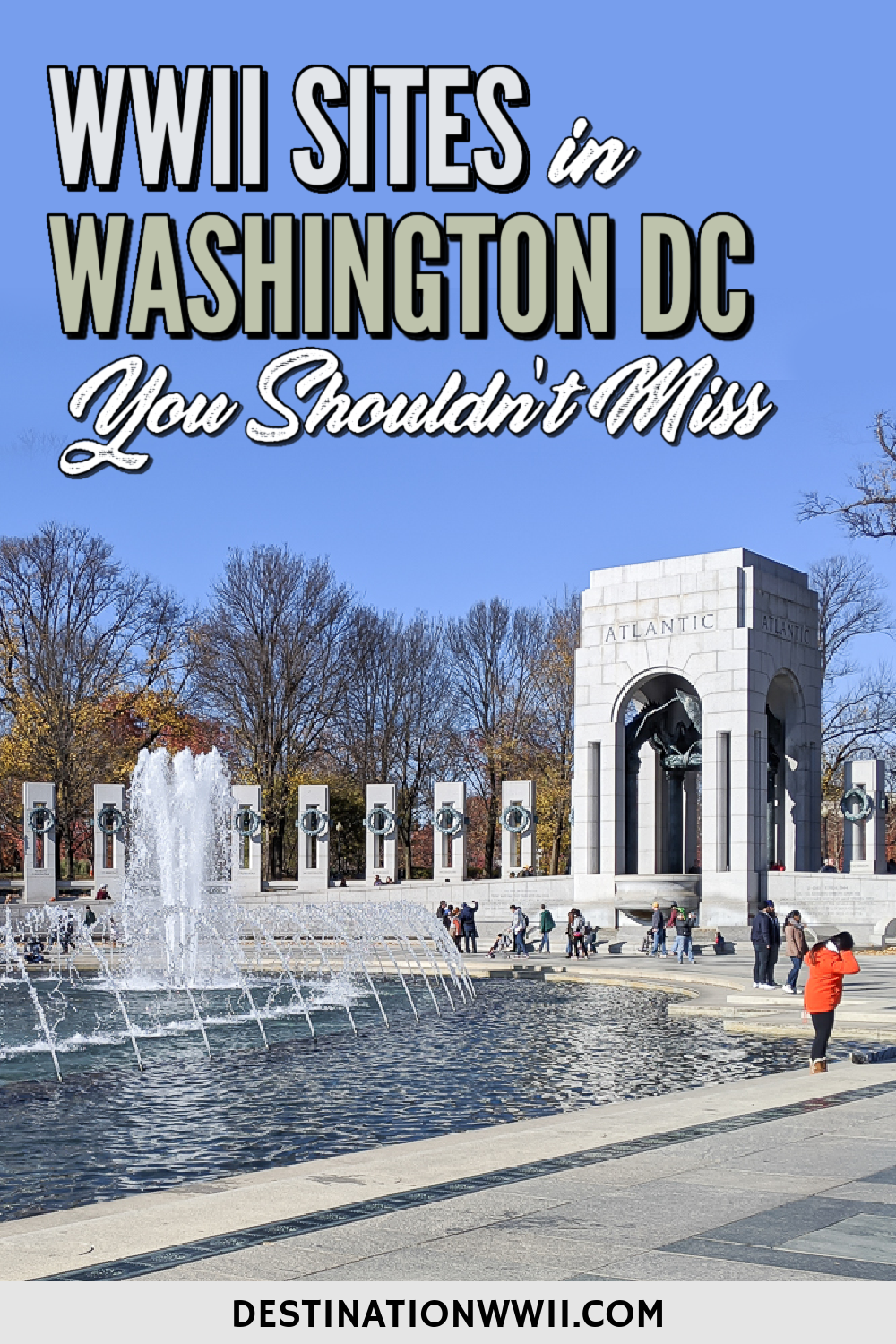
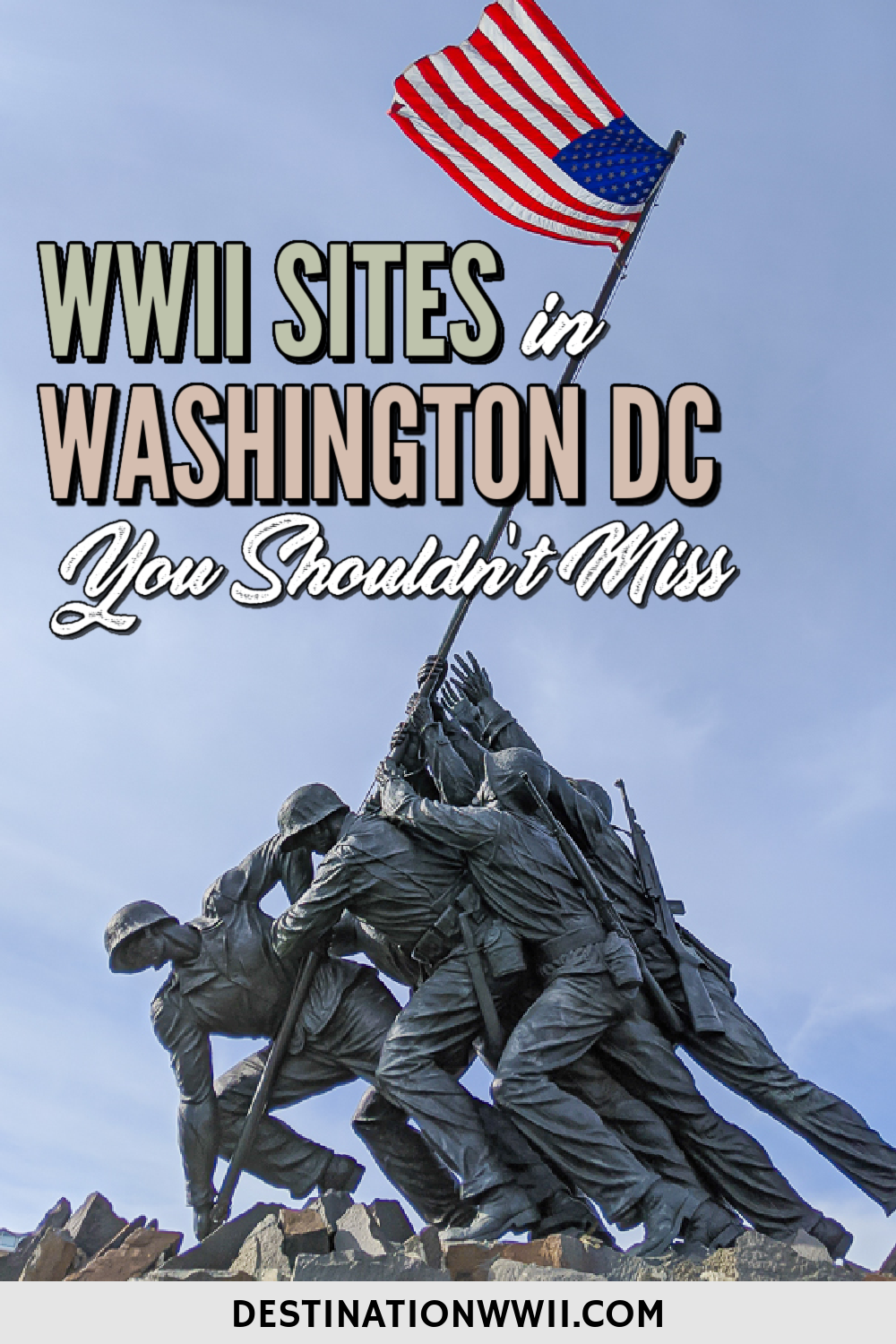
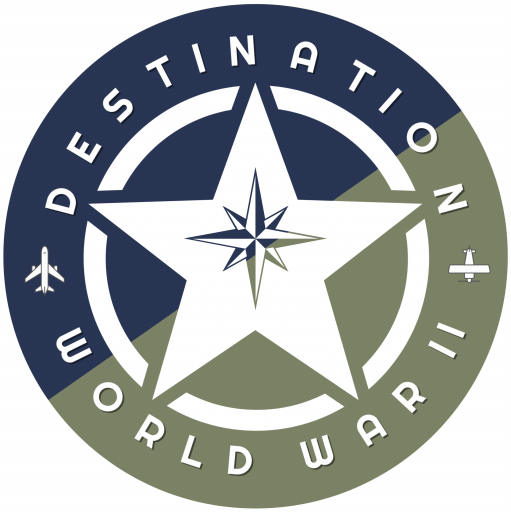

Hi Ashley!
The other location I would add which is not WWII related is the Law Enforcement Memorial.
This is great information. I will be traveling there this summer and some of the locations you have mentioned are definitely on the list. I have purchased your tours for Bastogne and Pearl Harbor. Extremely helpful.
Thank you!
John
That’s great, John! I hope you have some wonderful trips this year!